Concrete floors have revolutionized modern kitchen design, offering an incredible combination of durability, versatility, and aesthetic appeal. Once relegated to industrial spaces, concrete flooring now serves as a sophisticated foundation for contemporary kitchens, providing endless customization possibilities through staining, polishing, and texturing techniques. This flooring material can withstand heavy foot traffic, food spills, and daily kitchen activities while maintaining its appearance for decades. From minimalist polished surfaces to richly stained artistic designs, concrete floors complement every kitchen style while offering practical benefits like easy maintenance and seamless integration with underfloor heating systems.
1. Polished Concrete Floor Kitchen with High-Gloss Finish
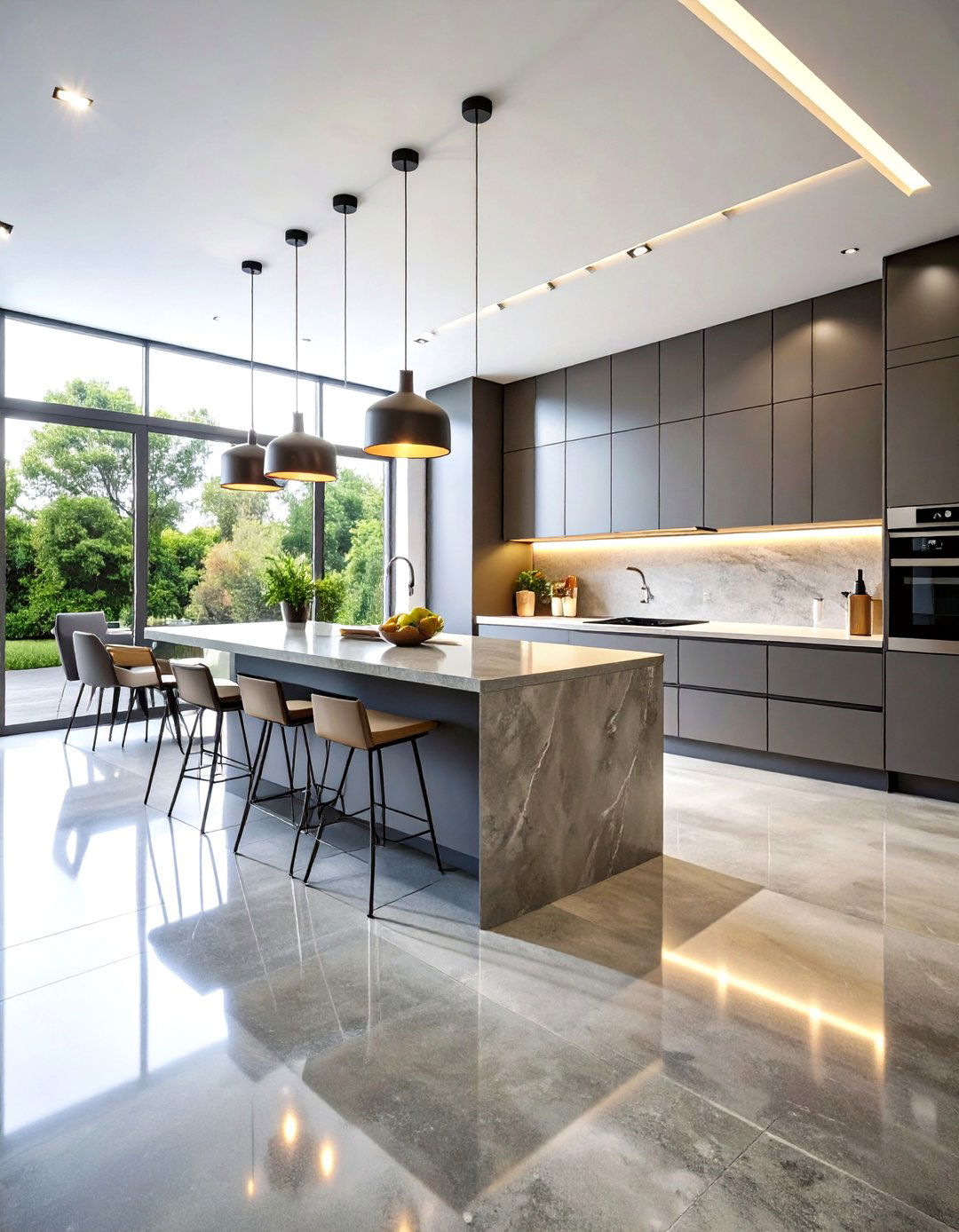
Polished concrete flooring creates a stunning mirror-like reflective surface that dramatically expands visual space and bounces natural light throughout your kitchen. This sleek concrete floor kitchen design features diamond-ground surfaces that achieve an ultra-smooth, glossy finish perfect for modern and contemporary spaces. The high-gloss concrete finish creates an illusion of space, making it ideal for smaller kitchens or open floor plans, while light bounces off the surface creating a bright, airy atmosphere. The grinding and polishing process reveals the natural beauty of the material, creating a smooth surface that reflects light beautifully and adds depth to your minimalist kitchen design. Maintenance involves simple sweeping and occasional mopping with pH-neutral cleaners.
2. Stained Concrete Floor Kitchen in Warm Earth Tones
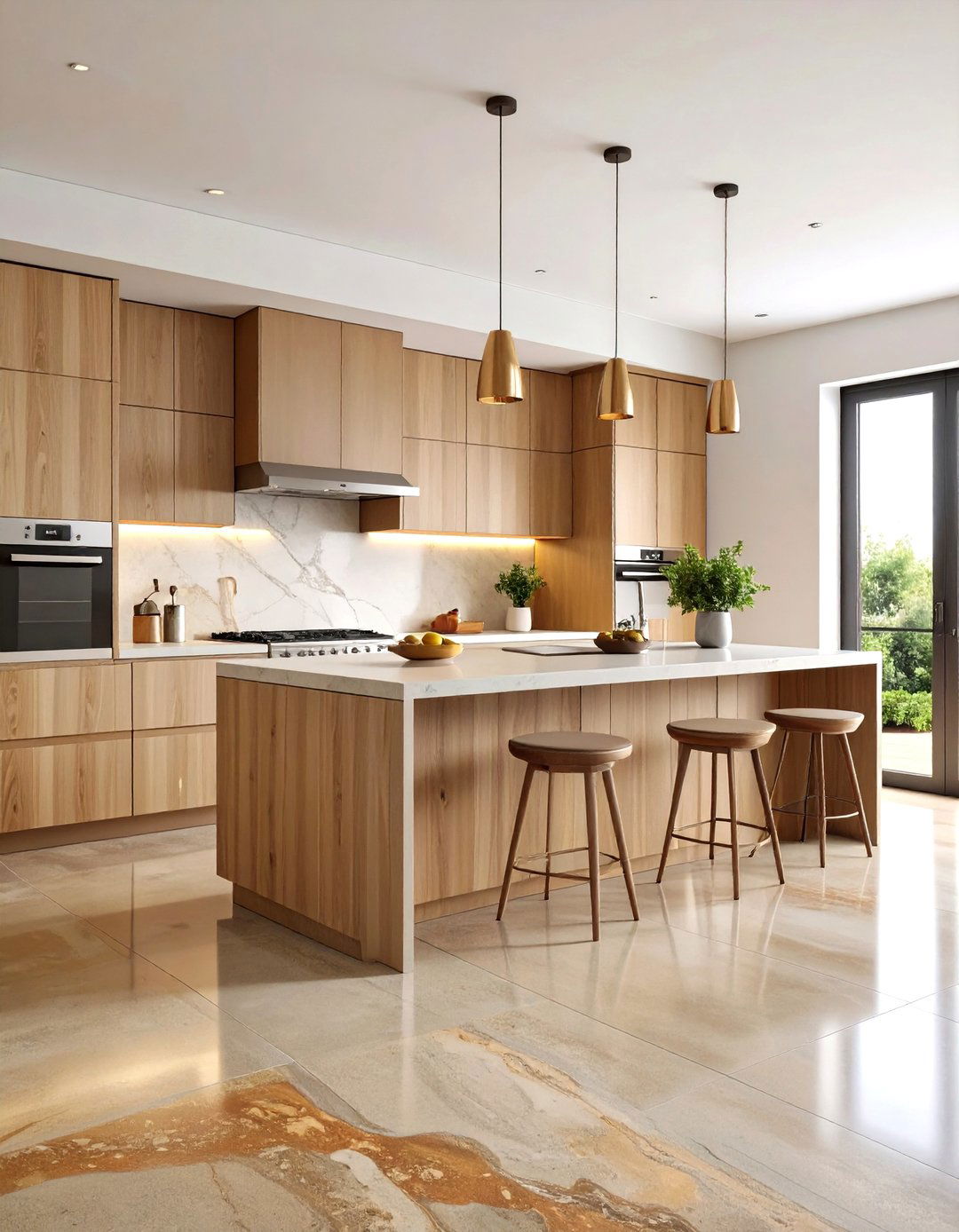
Stained concrete floors offer incredible versatility through acid-based or water-based staining techniques that penetrate deeply into the surface, creating permanent, fade-resistant colors with natural variations and mottling effects. Earth tone stained concrete floors, particularly in maple, golden brown, or copper brown shades, bring natural warmth into kitchen spaces while maintaining the practical benefits of concrete. Coffee brown acid stain creates rich, leather-like or marbled accents that provide stunning contrast when paired with lighter desert amber or malayan buff stains. These concrete floor kitchen designs develop unique color patterns due to the chemical reaction between stains and concrete minerals, ensuring each installation has distinctive character and movement that complements wooden cabinetry and natural materials beautifully.
3. Industrial Concrete Floor Kitchen with Raw Finish
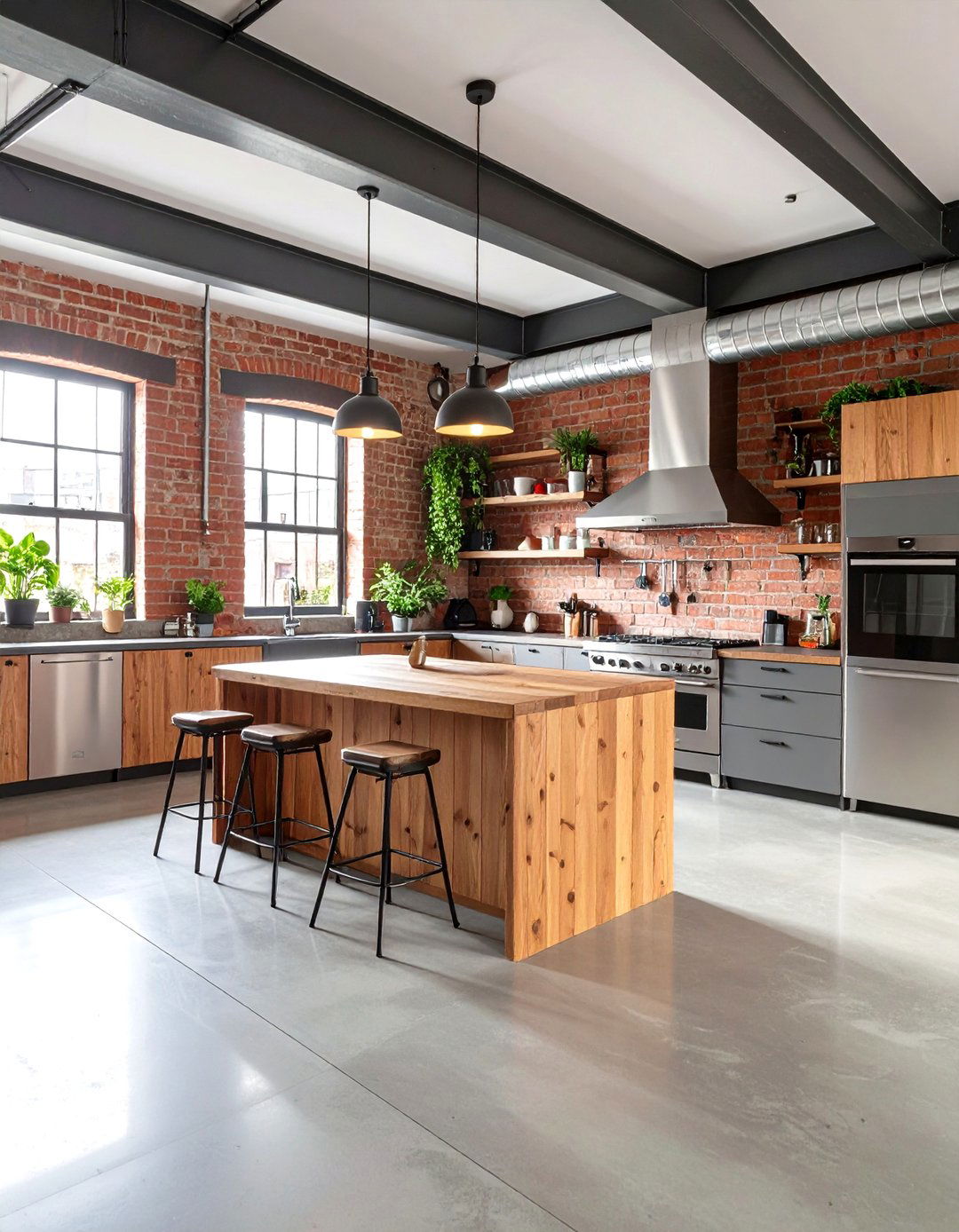
Industrial style concrete floor kitchens perfectly complement exposed brick walls, duct pipes, and wooden shelves, creating an authentic urban loft aesthetic. This raw concrete floor kitchen approach celebrates the material's natural texture and color variations without excessive polishing or refinement. The industrial concrete look maintains popularity due to its bold, contemporary appearance that pairs beautifully with stainless steel appliances and minimalist cabinetry. These floors store heat during the day and release it slowly after sundown, contributing to passive heating and cooling that reduces energy costs. The slightly rough texture provides natural slip resistance while requiring minimal maintenance beyond regular sweeping and occasional sealing to prevent staining from kitchen spills.
4. Microcement Concrete Floor Kitchen with Seamless Design
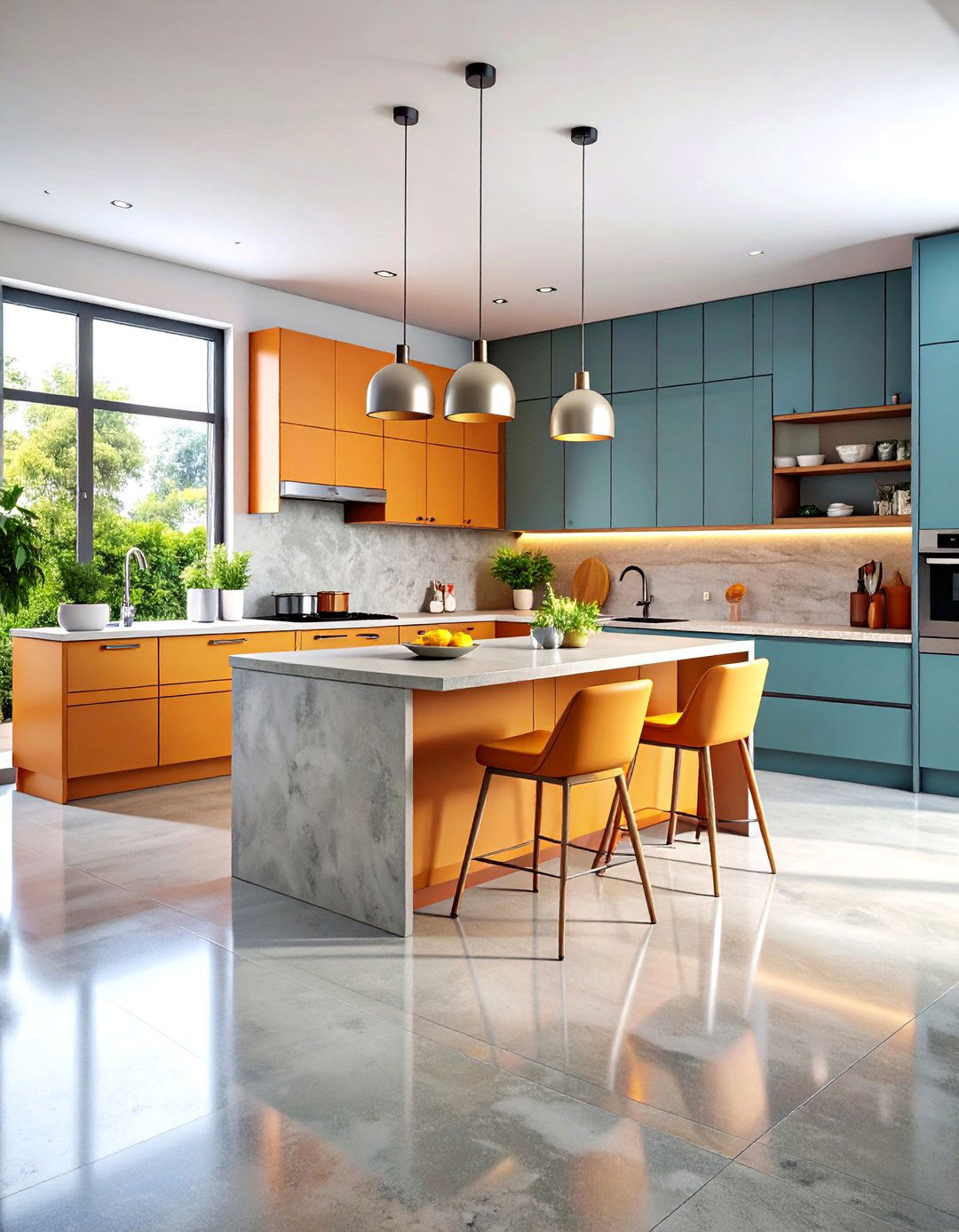
Microcement concrete floors create completely seamless surfaces without joints or expansion joints, offering a smooth finish that flows continuously throughout open-plan kitchen spaces. This concrete floor kitchen technique applies thin layers of modified cement over existing surfaces, making it ideal for renovation projects. The high adhesion properties allow microcement to be applied to kitchen cabinets, creating completely new cabinet fronts and transforming the kitchen's character with spectacular results. The seamless appearance makes spaces feel larger while providing practical benefits like easy cleaning and no grout lines for bacteria to collect. Available in various colors and finishes, microcement concrete floors offer design flexibility while maintaining the durability and low maintenance characteristics that make concrete ideal for busy kitchen environments.
5. Geometric Patterned Concrete Floor Kitchen with Decorative Inlays
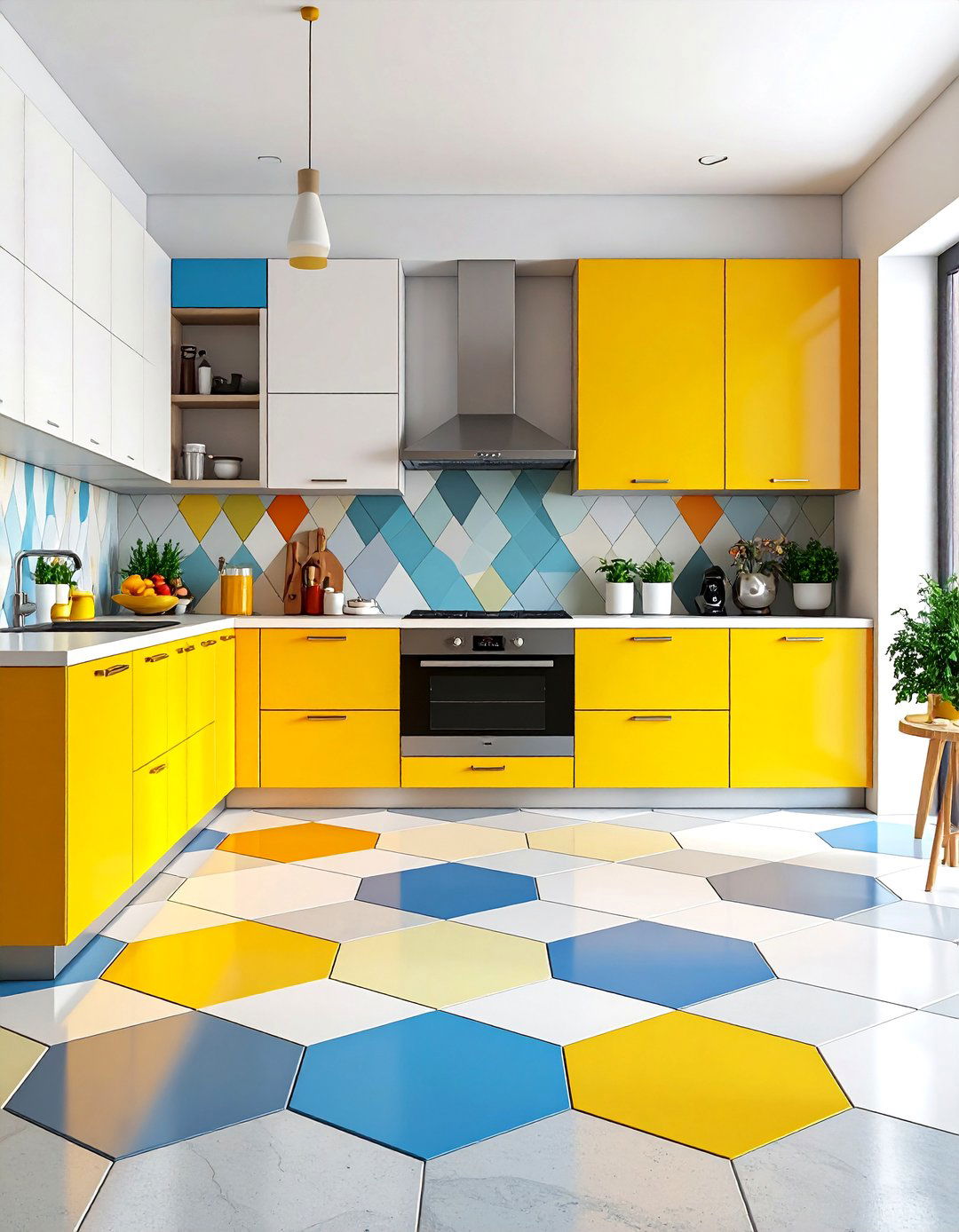
Geometric concrete floor patterns featuring hexagons, triangles, diamonds, and other bold shapes create contemporary, artistic kitchen foundations that express personal style. These concrete floor kitchen designs incorporate decorative elements through saw-cutting, stamping, or inlay techniques that transform plain surfaces into stunning focal points. Custom patterns, borders, and even family crests can be stenciled into concrete floors and sealed with polished finishes, creating unique installations popular in entrance halls and main living areas. Unlike other flooring materials, concrete can accommodate complex graphics and logos through advanced application techniques, offering unlimited design possibilities. The geometric patterns add visual interest while maintaining the practical benefits of concrete flooring, including durability, stain resistance, and easy maintenance for daily kitchen use.
6. Matte Finish Concrete Floor Kitchen with Subtle Elegance
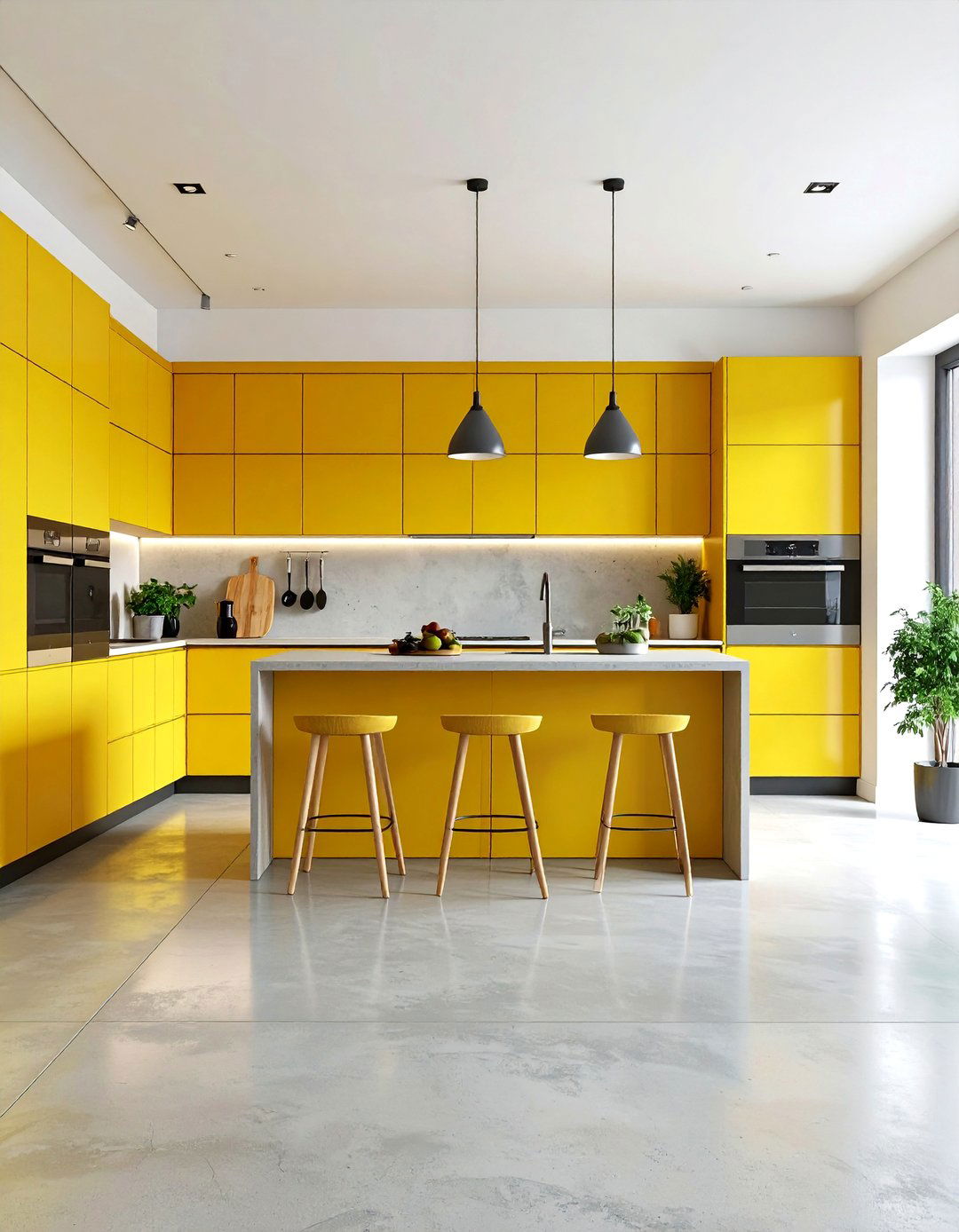
Matte finish concrete floors represent a major trend moving away from high-gloss surfaces, offering a more natural and forgiving appearance that aligns with current minimalist and Scandinavian design preferences. This concrete floor kitchen approach provides sophisticated understatement that serves as a neutral backdrop for bold cabinetry and statement pieces. Matte concrete finishes create calm, tranquil atmospheres in kitchens while providing a neutral base for adding stylish cabinets, countertops, and decorative elements. The subtle appearance eliminates harsh reflections while maintaining the durability and low maintenance benefits that make concrete ideal for kitchen environments. Matte finishes also hide minor scratches and wear better than glossy surfaces, making them practical choices for busy family kitchens with heavy foot traffic.
7. Colored Concrete Floor Kitchen with Vibrant Blue Accents

Colored concrete floors introduce personality and visual interest through staining techniques that range from subtle earth tones to vibrant blues, greens, and other bold hues. Azure blue acid stain creates stunning aqua-topaz mineral finishes that can range from striking vibrancy to subtle elegance, depending on the concrete composition and application technique. Water-based stains offer a full spectrum of colors that can be mixed like paints to create custom shades, while acid stains provide natural variations and unique mottling effects. This concrete floor kitchen design works particularly well in spaces with neutral cabinetry and fixtures, where the colored floor becomes a striking focal point. The color penetrates into the concrete surface rather than sitting on top like paint, ensuring long-lasting durability and fade resistance.
8. Concrete Tile Floor Kitchen with Modular Flexibility
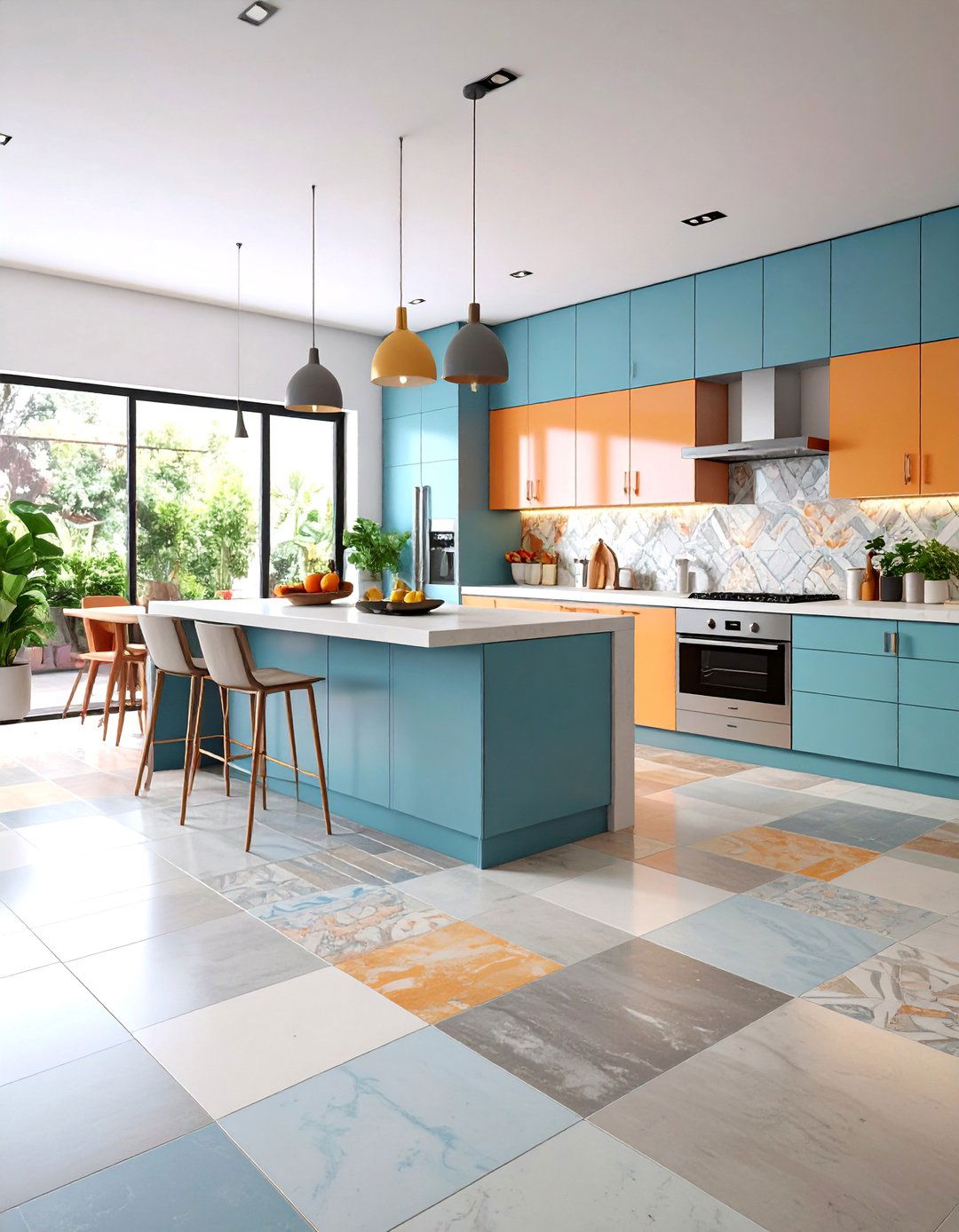
Decorative concrete tiles offer an easy way to add visual elements without replacing entire concrete floors, available in numerous colors, designs, textures, and sizes to fit any kitchen style. This concrete floor kitchen approach provides the benefits of concrete with the installation flexibility of traditional tiles. Concrete tiles can be laid after kitchen installation, making them simpler alternatives to poured concrete that requires installation before kitchen fitting and wall plastering. Different sized tiles and varying laying patterns create interesting visual effects, with manufacturers noting increased fluidity in stone and concrete tile designs that use playful combinations of different sizes and types. The modular nature allows for creative patterns, borders, and accent areas while maintaining easy replacement if individual tiles become damaged over time.
9. Concrete Floor Kitchen with Integrated Underfloor Heating
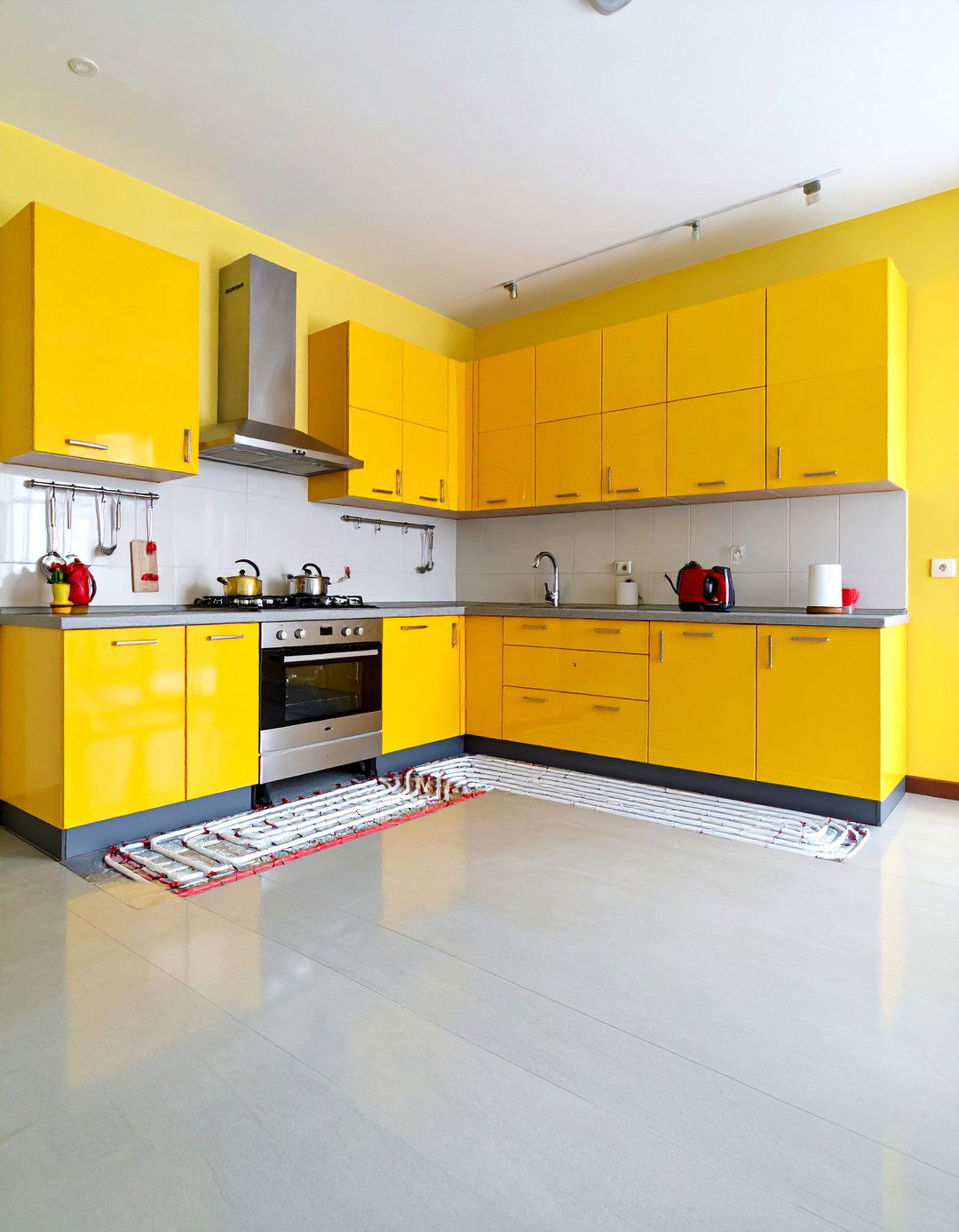
Concrete floors serve as ideal partners for underfloor heating systems due to their excellent thermal mass properties, heating up quickly and retaining warmth even after the heating source turns off. This concrete floor kitchen design addresses the common concern about concrete feeling cold underfoot while enhancing energy efficiency. Radiant heating can be installed beneath various concrete flooring types, providing consistent warmth throughout the kitchen and making it a popular choice for homeowners seeking added comfort during colder months. The thermal properties help with passive heating and cooling of the house, reducing power bills while maintaining comfortable temperatures. The combination of concrete durability with radiant heating creates luxurious kitchen environments that remain comfortable year-round while offering the practical benefits of easy maintenance and stain resistance.
10. Exposed Aggregate Concrete Floor Kitchen with Textural Interest
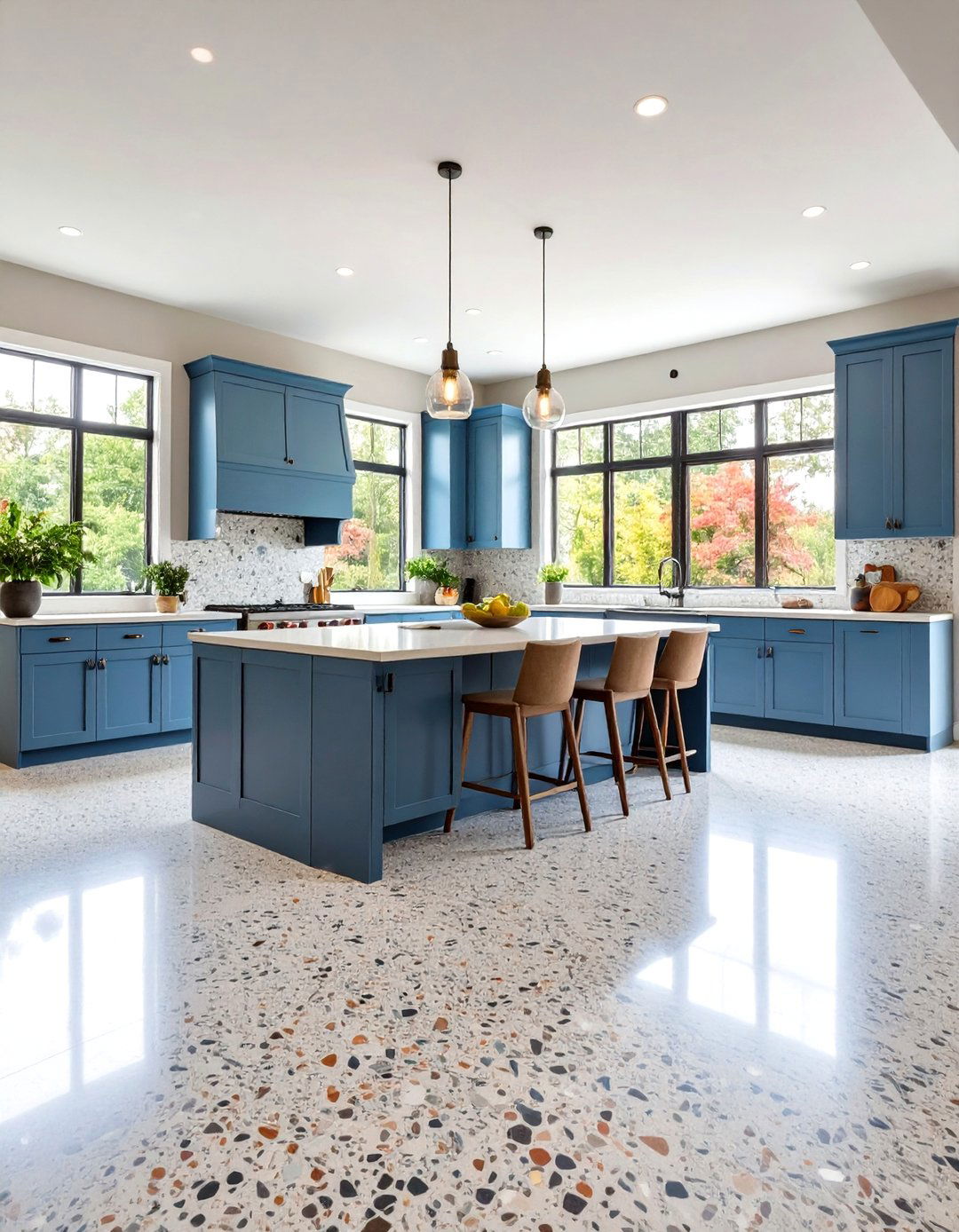
Exposed aggregate concrete floors reveal the natural stones and decorative materials within the concrete mix, creating rich textural surfaces that add depth and visual interest to kitchen spaces. This concrete floor kitchen technique involves removing the top cement layer to expose the underlying aggregate, creating naturally slip-resistant surfaces perfect for high-traffic areas. The textural variations provide unique, organic patterns with every installation while offering practical benefits like improved grip underfoot. Different aggregate materials, from river stones to colored glass chips, create distinct appearances ranging from subtle natural textures to bold decorative statements. These floors capture the essence of natural stone surfaces while maintaining concrete's durability and low maintenance requirements. The textural finish helps hide minor wear and provides excellent traction even when wet from kitchen spills.
11. Concrete Floor Kitchen with Wood-Look Stamped Patterns
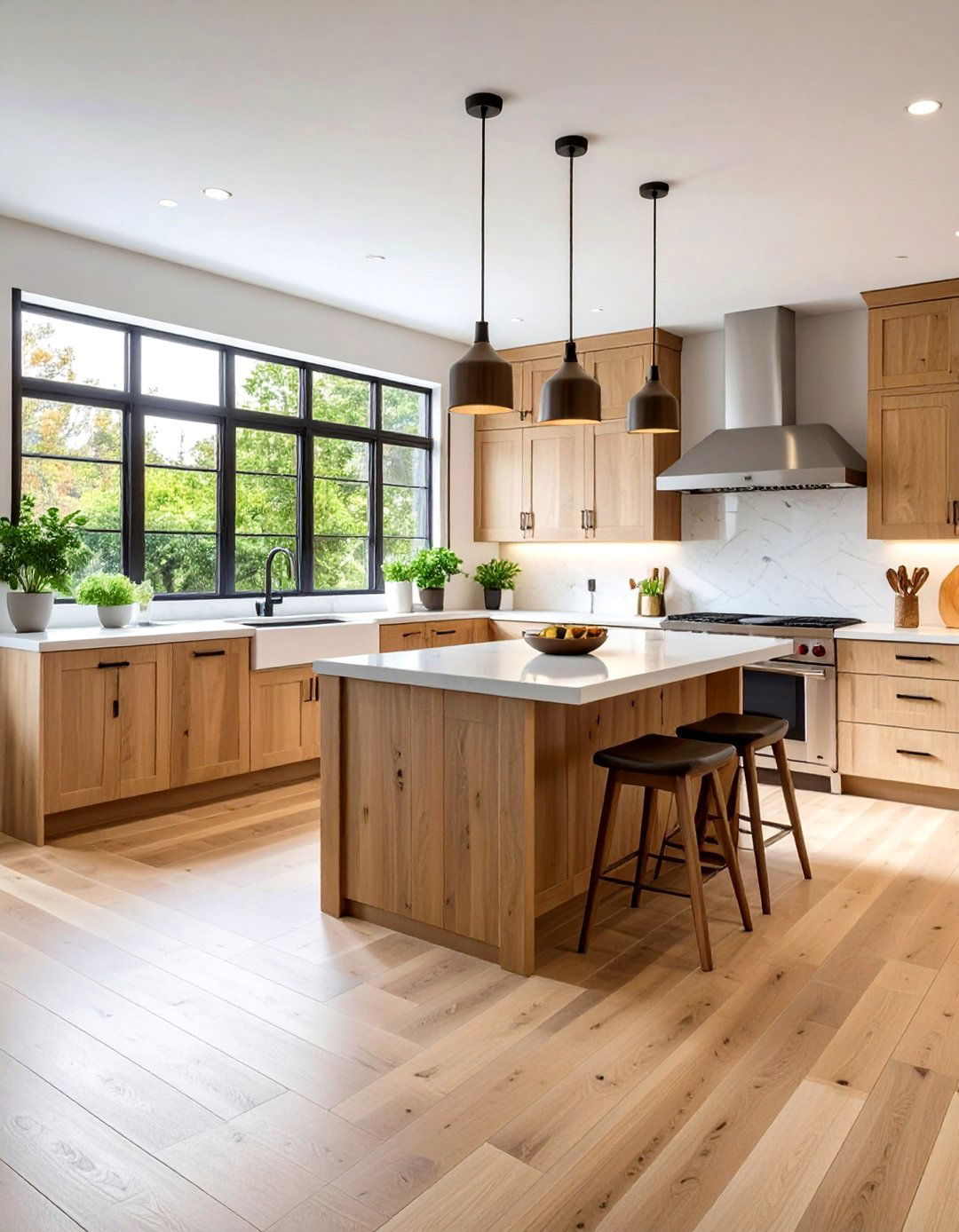
Stamped concrete floors can mimic the appearance of hardwood, tile, or stone through flexible mats and texture skins that leave realistic impressions while maintaining concrete's superior durability. This concrete floor kitchen design offers the warm appearance of wood without the maintenance concerns, water damage risks, or replacement costs associated with natural materials. Stamped concrete designs provide opportunities to create hardwood floor appearances in kitchens, living rooms, or entire homes at a fraction of the cost while requiring minimal maintenance. The semi-translucent finish allows natural concrete variations to show through, similar to how wood stains enhance grain patterns, creating unique organic appearances with each installation. Advanced stamping techniques can replicate specific wood species, plank sizes, and even distressing effects for authentic appearances that withstand kitchen environments.
12. Epoxy-Coated Concrete Floor Kitchen with High Performance
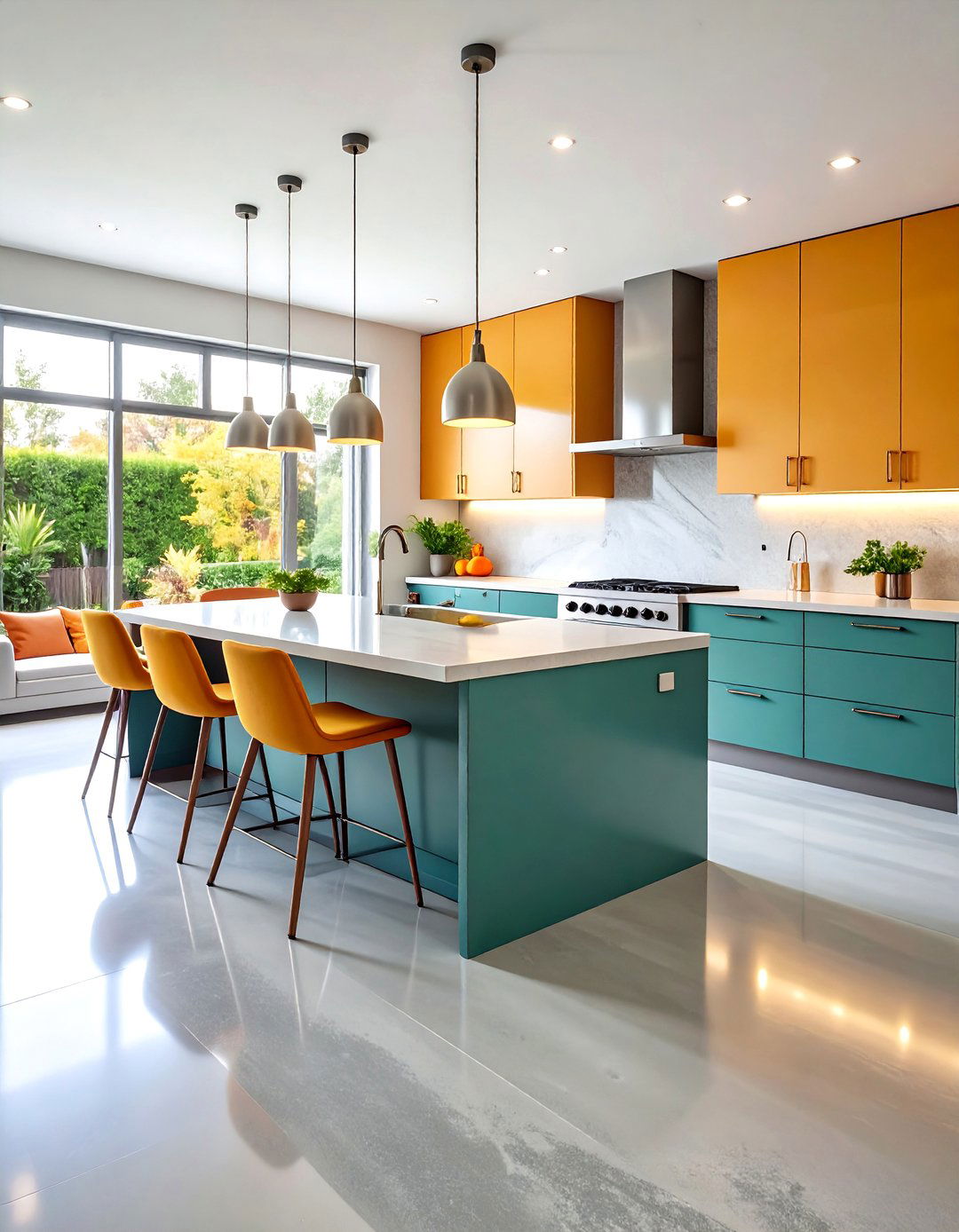
Epoxy-coated concrete floors provide exceptional durability, chemical resistance, and non-porous surfaces ideal for kitchen environments prone to spills, grease, and heavy traffic. This concrete floor kitchen solution offers antimicrobial properties that restrict microorganism growth while remaining easy to clean and maintain. Unlike traditional epoxy paints, high-quality epoxy systems penetrate into concrete substrates during curing, becoming integral parts of the floor that resist cracking and peeling. Professional epoxy systems create seamless, impermeable barriers easily cleaned with standard detergents, with some formulations offering anti-slip additives for enhanced safety in grease-prone areas. Available in 42 colors with custom design options including logos and branding, epoxy concrete floors provide both aesthetic flexibility and superior performance for demanding kitchen applications.
13. Concrete Floor Kitchen with Acid-Washed Vintage Appeal
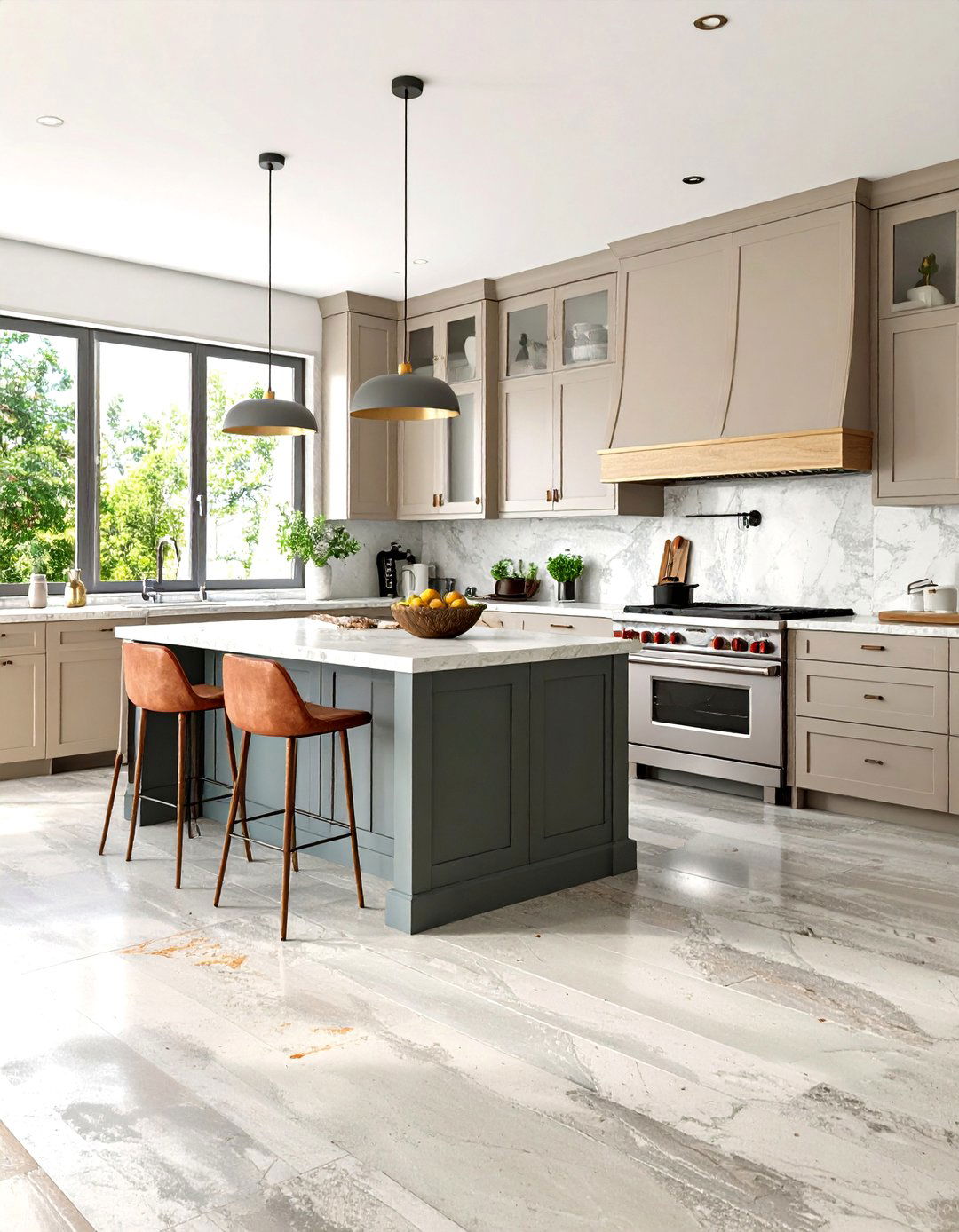
Acid stain concrete floors have been a decorative concrete staple for over a century, creating rich, earthy tones and natural variegated appearances through chemical reactions with calcium compounds in the concrete. This concrete floor kitchen approach produces authentic vintage character with unique marbled patterns that enhance the floor's natural beauty. The acid staining process creates color variations similar to natural marble or granite, with metallic particles bonding permanently to concrete and providing excellent UV resistance for lasting beauty. Multiple acid stain colors can be layered and blended to create complex, moving designs that capture the essence of natural landscapes while maintaining concrete's practical benefits. The unique reaction patterns ensure every installation develops distinctive character, making each acid-stained concrete floor a one-of-a-kind artistic installation.
14. Minimalist Concrete Floor Kitchen with Neutral Gray Tones
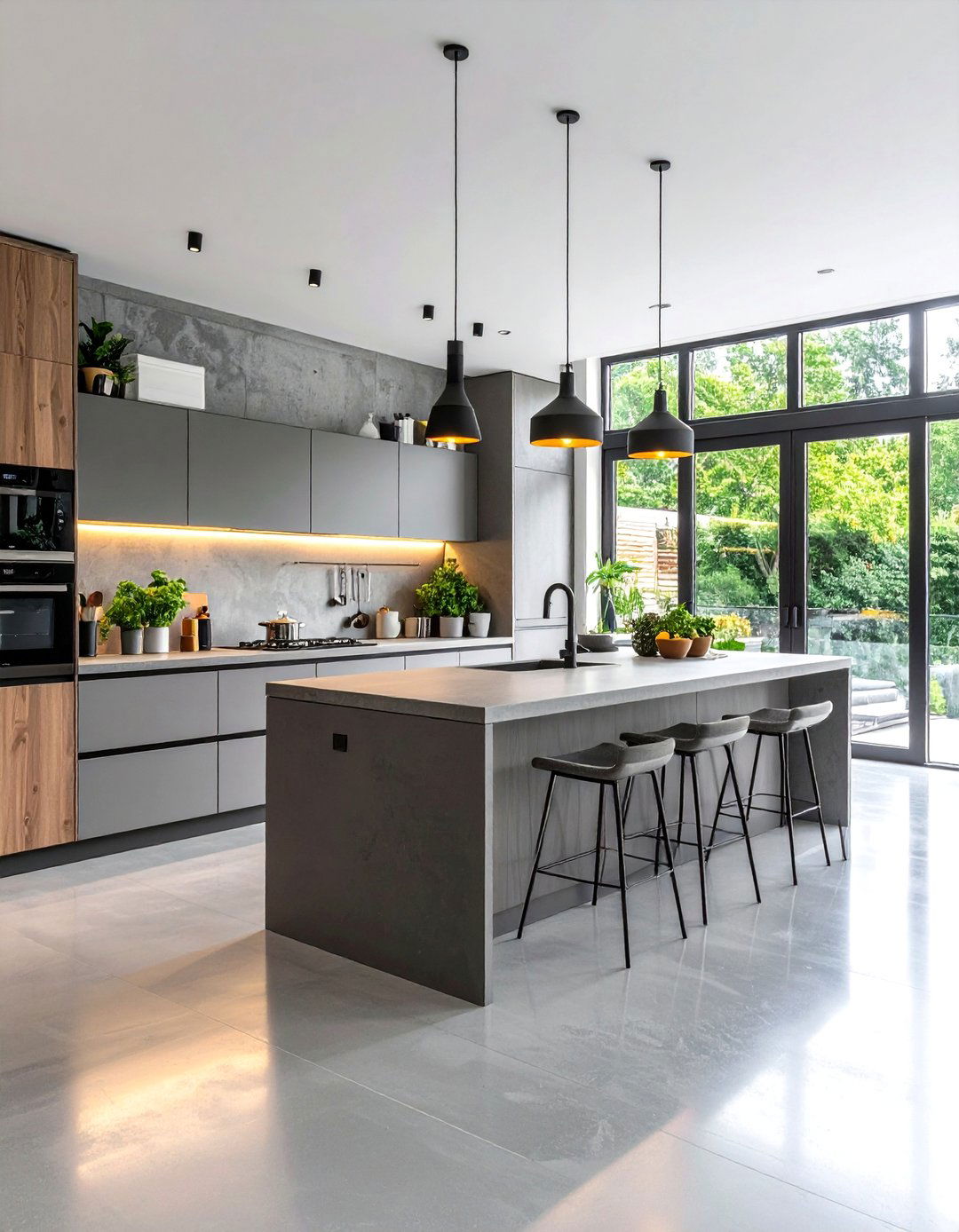
Minimalist concrete floors in neutral gray tones create perfect foundations for Scandinavian and contemporary kitchen designs, emphasizing clean lines and uncluttered aesthetics. This concrete floor kitchen concept relies on the material's inherent beauty rather than decorative treatments, celebrating concrete's natural color and subtle variations. Light natural polished concrete pairs excellently with oak kitchen cabinetry, with warm wood tones complementing concrete's neutral shades while adding depth to bolder color schemes. The pared-down material works within neutral color schemes, marrying stark contrasts between black details and glossy surfaces with crisp whites and warm wood tones. Regular maintenance involves simple sweeping and mopping, allowing more time to enjoy the tranquil, minimalist spaces while eliminating the need for harsh chemicals or frequent refinishing.
15. Concrete Floor Kitchen with Metallic Epoxy Finishes
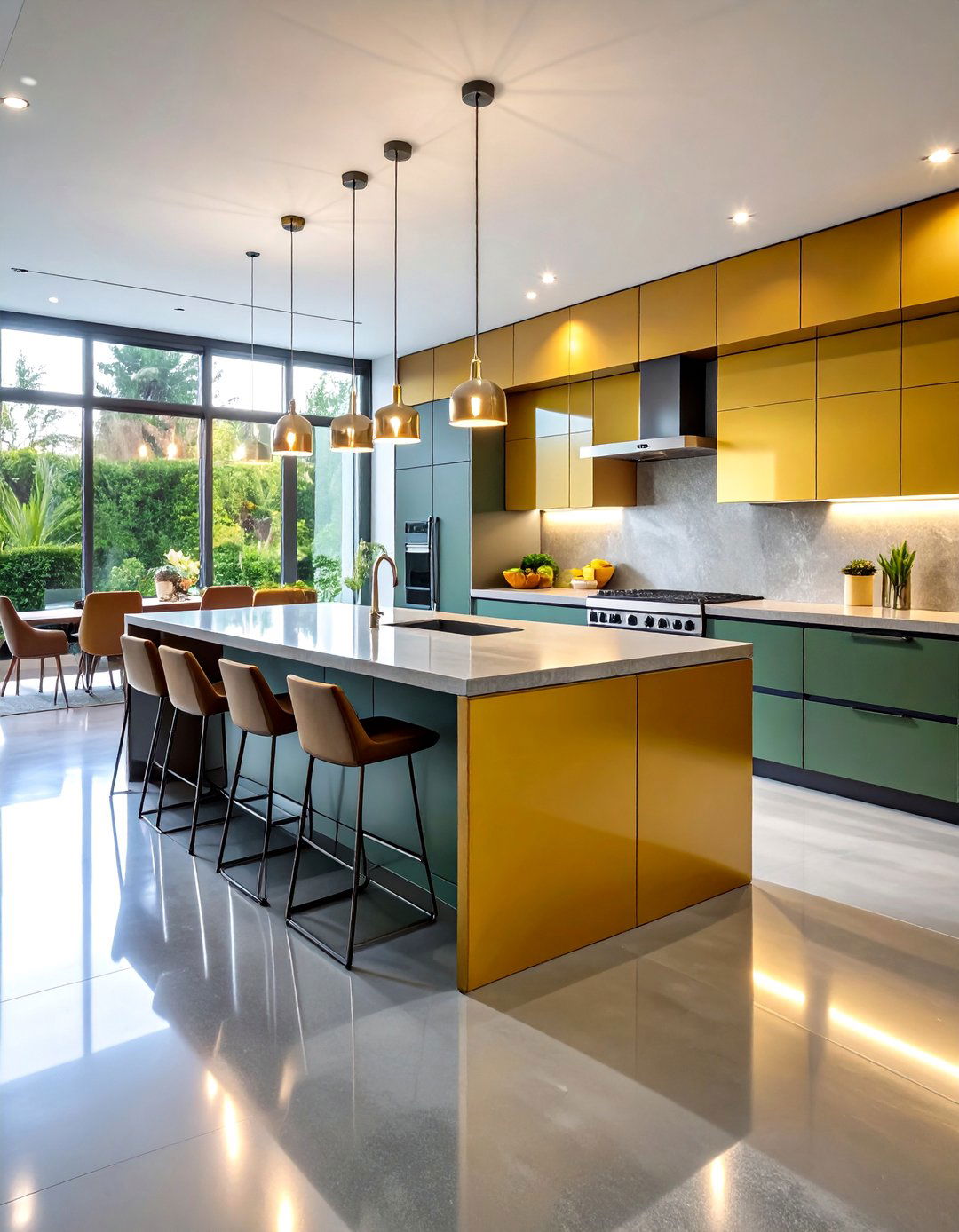
Metallic epoxy concrete floors create unbelievable beauty through specialized pigments that produce shimmering, three-dimensional effects perfect for contemporary kitchen designs. This concrete floor kitchen technique combines the durability of concrete with stunning visual appeal through metallic particles that shift and change appearance based on lighting conditions. Metallic pigments in epoxy create sophisticated finishes suitable for floors and countertops, offering ultimate durability and gloss while providing unique aesthetic effects. The application process involves multiple layers that create depth and movement, resulting in surfaces that appear to have flowing metal or liquid mercury effects. These decorative systems offer slip-resistant properties and easy maintenance while providing stunning focal points that complement modern kitchen appliances and fixtures. The metallic finish reflects light beautifully, enhancing natural lighting while creating dramatic evening ambiance under artificial illumination.
16. Concrete Floor Kitchen with Terrazzo-Style Aggregate
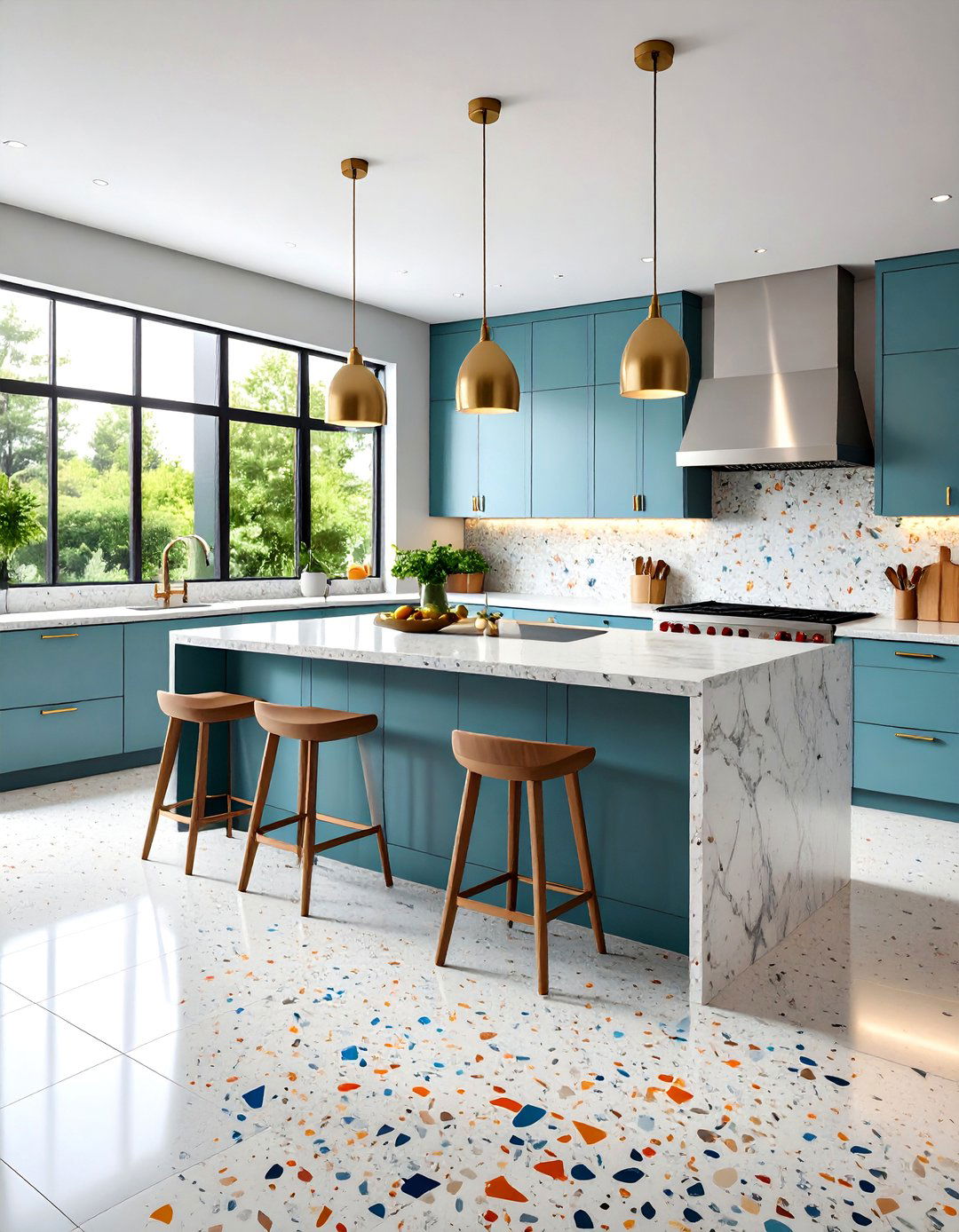
Terrazzo-style concrete floors incorporate recycled chips of marble, glass, and concrete to create unique speckled appearances that add character and visual interest to kitchen spaces. This concrete floor kitchen design celebrates sustainability while providing distinctive aesthetic appeal through carefully selected aggregate materials. Traditional terrazzo techniques can be replicated in modern concrete applications, offering the sought-after speckled appearance with improved installation methods and maintenance characteristics. The metallic hardware and natural stone elements give sophisticated touches that make concrete feel chic and tasteful rather than rough around the edges. Various chip sizes, colors, and materials create customizable appearances ranging from subtle speckled textures to bold, colorful patterns. The embedded aggregate provides natural slip resistance while the sealed surface remains easy to clean and maintain, making it ideal for busy kitchen environments requiring both beauty and functionality.
17. Concrete Floor Kitchen with Border and Accent Designs
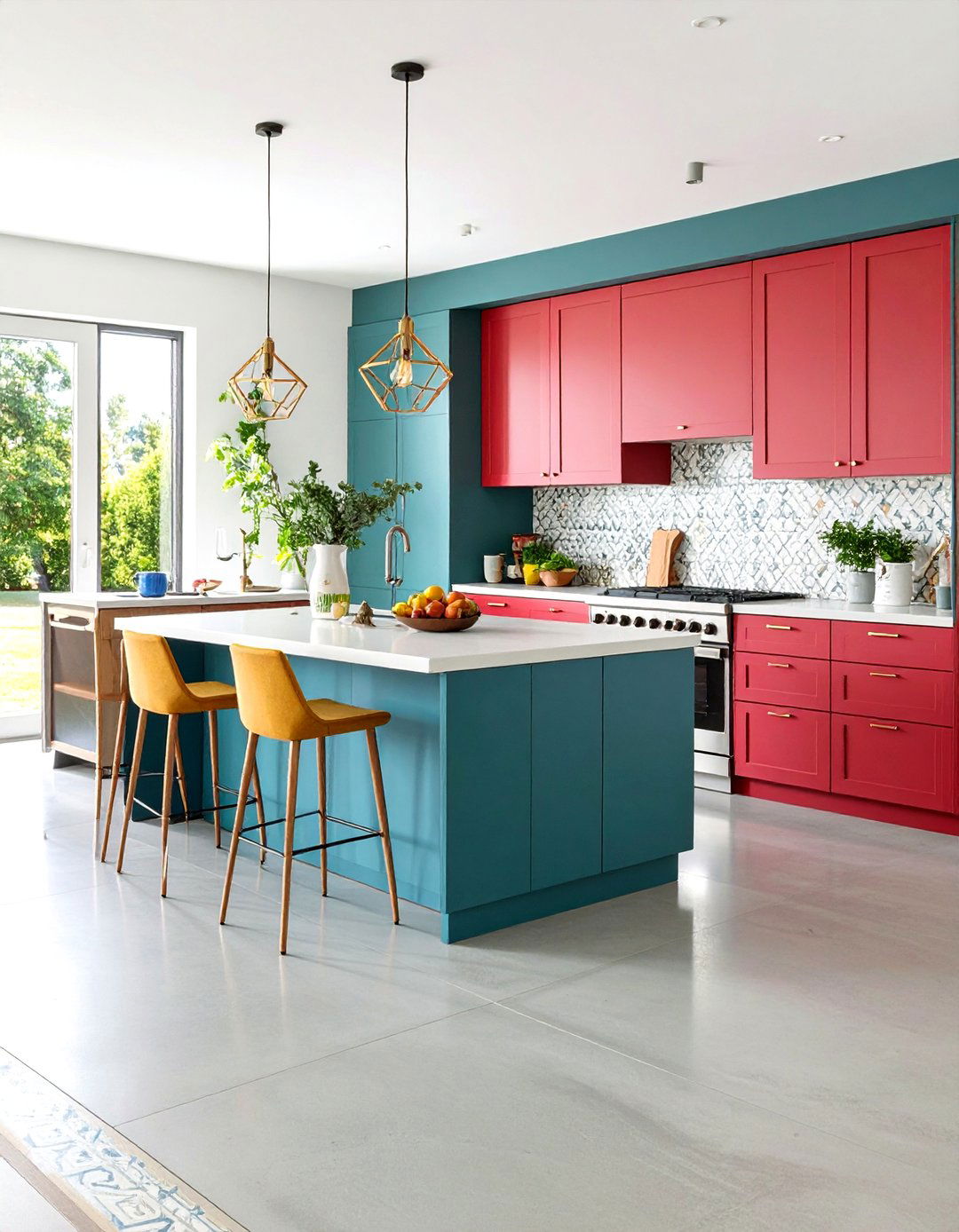
Custom border and accent designs in concrete floors create sophisticated installations that incorporate family crests, geometric patterns, or artistic elements through stenciling and specialized application techniques. This concrete floor kitchen approach adds personalized character through carefully planned decorative elements that complement the overall design scheme. Decorative stencils, templates, and painter's tape enable artistic surfaces that are beautiful, practical, durable, and cost-effective compared to other custom flooring options. Advanced techniques make it possible to place high-quality digital images on concrete floors, offering unlimited possibilities for logos, graphics, and artistic expressions. Border designs can define spaces within open-plan kitchens, while accent areas highlight islands or dining zones. The permanent nature of concrete allows these decorative elements to become lasting features that won't wear away with foot traffic or regular cleaning.
18. Concrete Floor Kitchen with Outdoor-Indoor Seamless Flow
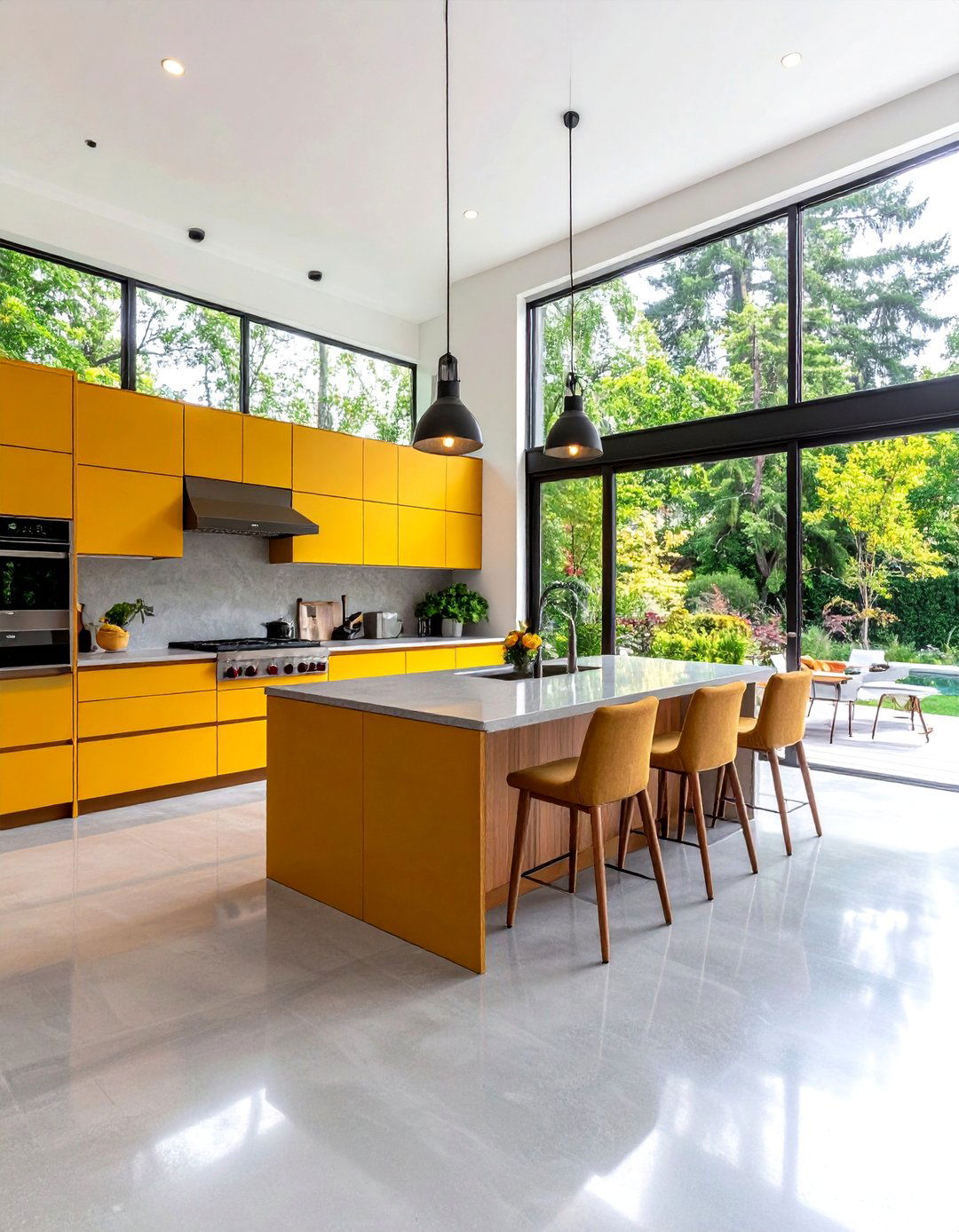
Concrete floors excel at creating seamless transitions between indoor kitchens and outdoor cooking spaces, with polished surfaces extending from internal patios into dining areas. This concrete floor kitchen design maximizes space flow while providing consistent, durable surfaces for both interior and exterior environments. Concrete flooring flows beautifully from interior to exterior spaces, offering smart finishes that complement outdoor decking and patio areas while surviving harsh weather conditions. The seamless vista between dining spaces, prep areas, and outdoor cooking zones makes concrete perfect for entertaining-focused kitchen designs. UV-resistant acid stains and sealers ensure outdoor portions maintain their appearance despite exposure to sunlight and weather. This approach works particularly well for homes with covered outdoor kitchens, pool areas, or extensive patio entertaining spaces where consistent flooring enhances design cohesion.
19. Concrete Floor Kitchen with Artistic Stenciled Patterns
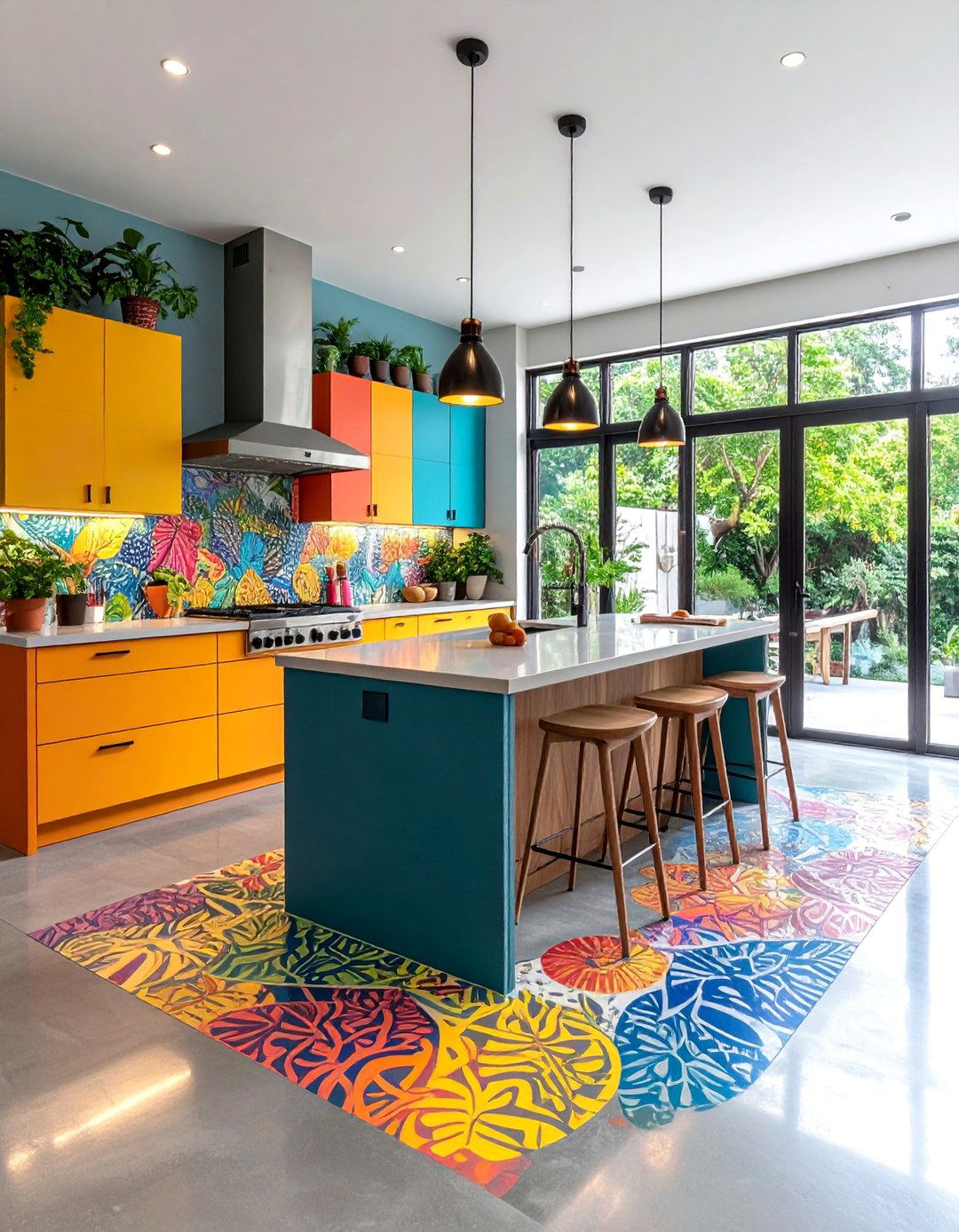
Artistic stenciled patterns in concrete floors transform practical surfaces into stunning focal points through creative application techniques that combine multiple stain colors with decorative templates. This concrete floor kitchen concept elevates flooring from functional to artistic, creating custom installations that reflect personal style and design preferences. Multi-colored designs capture natural landscape essences, bringing organic touches to indoor spaces through artful combinations of coffee brown, seagrass, and other earth-tone stains. Professional installation techniques ensure pattern precision while maintaining the durability and easy maintenance characteristics essential for kitchen environments. Bespoke patterns require designer creation and professional application, but result in unique installations that become permanent art pieces within the home. The stenciled designs can incorporate geometric patterns, nature motifs, or abstract compositions that complement cabinetry, backsplashes, and overall kitchen aesthetics while providing conversation-starting visual elements.
20. Concrete Floor Kitchen with Glossy White Finish
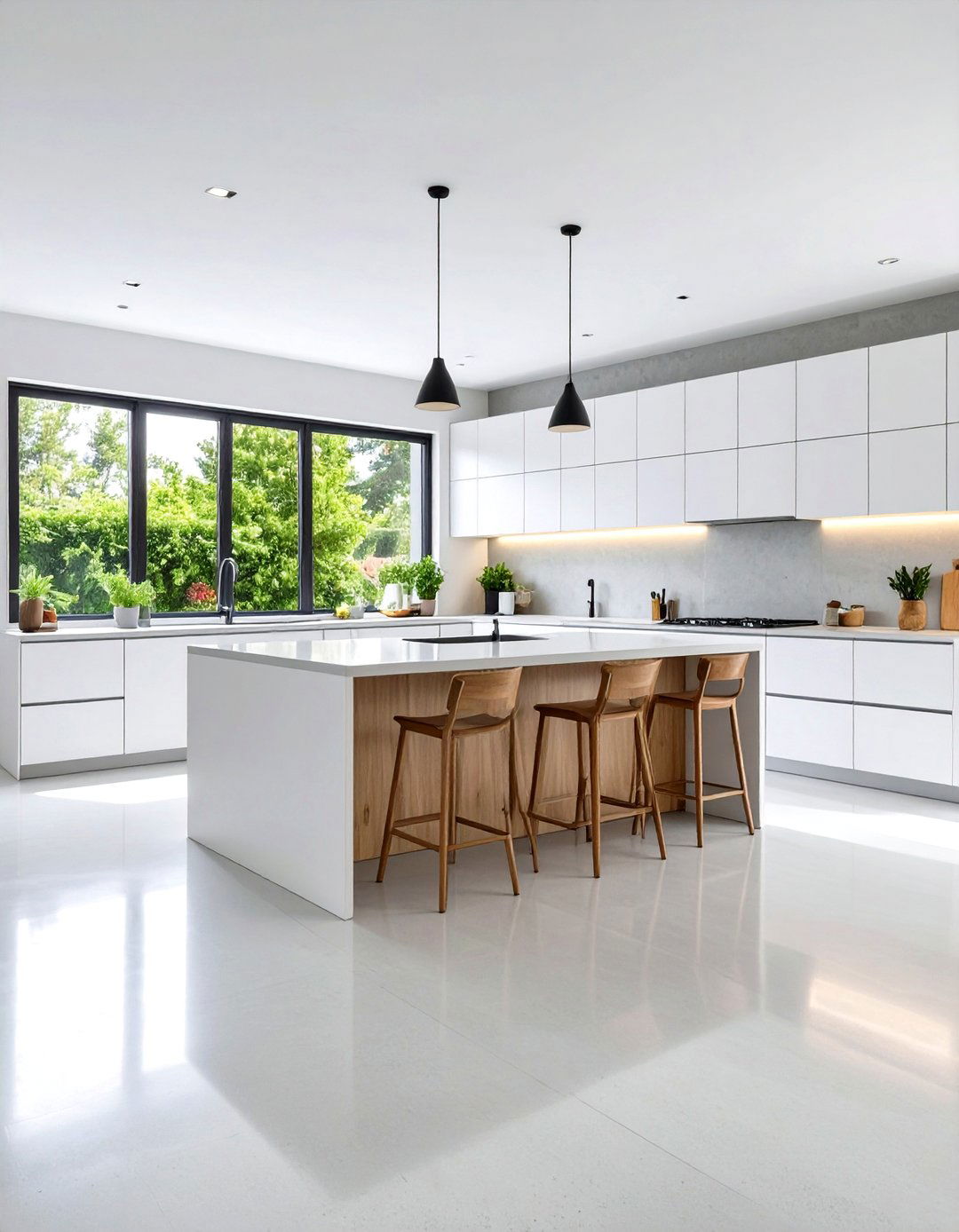
White-painted polished concrete floors create bright, modern appearances that work beautifully in minimalist and contemporary kitchen designs while maintaining concrete's practical benefits. This concrete floor kitchen approach maximizes natural light reflection while providing clean, fresh aesthetics that complement white cabinetry and stainless steel appliances. Smart white finishes complement outdoor decking and patio areas while creating sophisticated interior environments that feel larger and more open. White concrete floors prevent kitchens from looking cold or sterile when paired with warm materials and appropriate lighting, offering fresh alternatives to traditional flooring options. Professional application ensures even coverage and durability while specialized sealers protect the white finish from staining and wear. Light gray and beige alternatives provide similar brightening effects while offering more forgiving maintenance characteristics for busy family kitchens.
Conclusion:
Concrete floor kitchens represent the perfect marriage of form and function, offering unmatched durability, endless design possibilities, and surprisingly low maintenance requirements. From industrial raw finishes to sophisticated polished surfaces, concrete provides customization opportunities unavailable with traditional flooring materials while withstanding kitchen environments better than wood, tile, or linoleum. Whether choosing minimalist gray tones, vibrant stained colors, or artistic patterned designs, concrete floors create lasting foundations that improve with age while requiring only basic cleaning maintenance. These twenty concrete floor kitchen ideas demonstrate the material's versatility in complementing any design style while providing practical solutions for modern living.


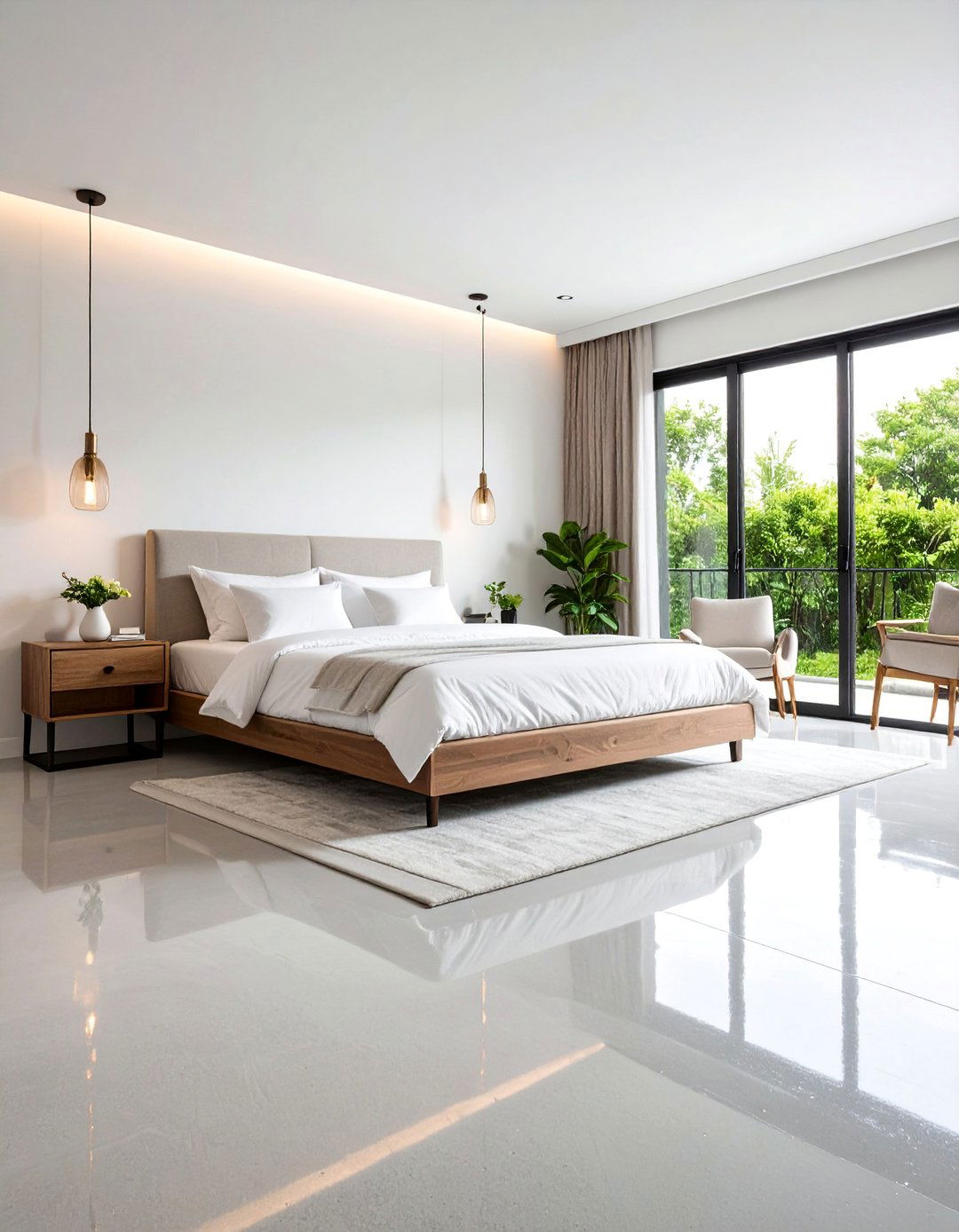
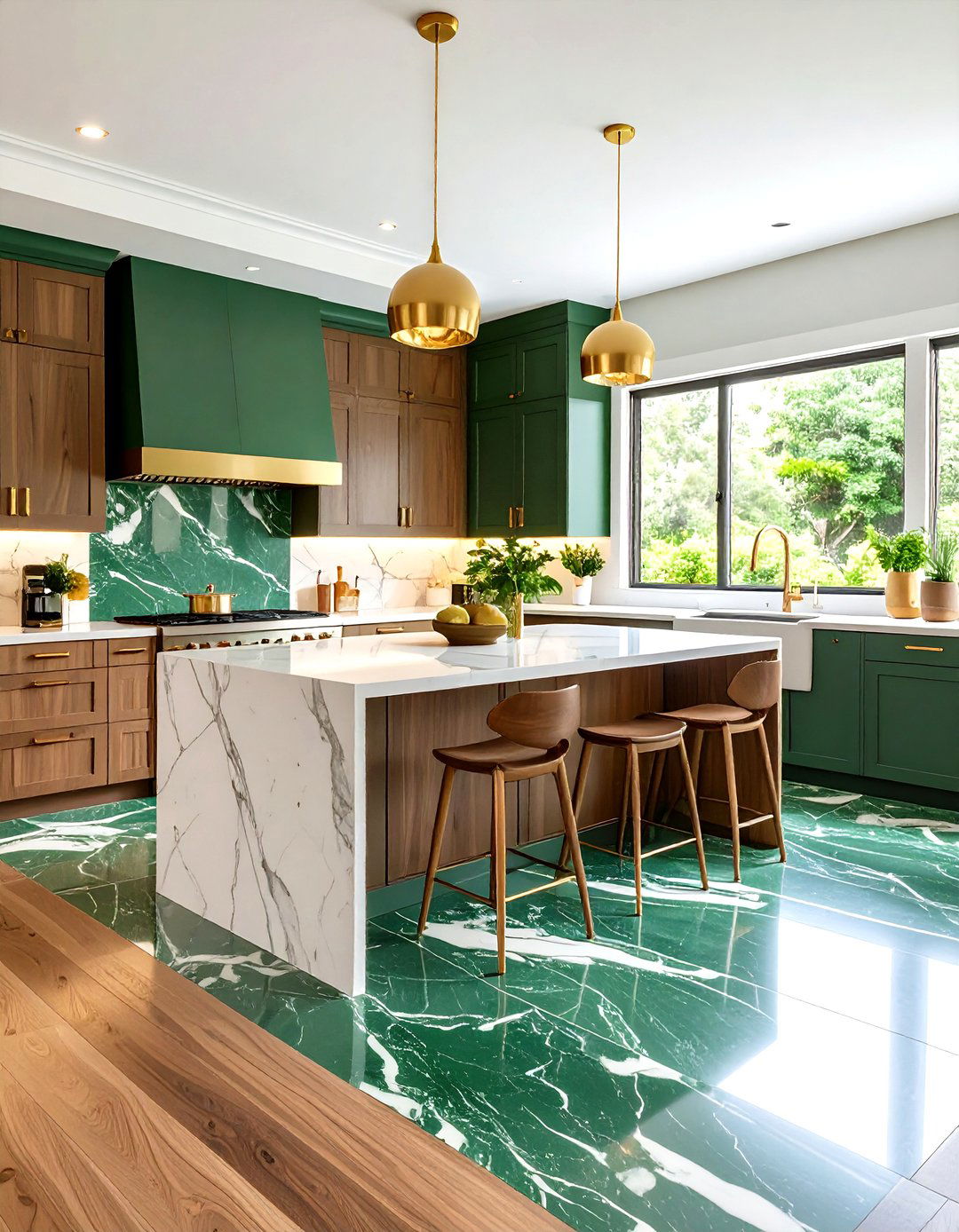

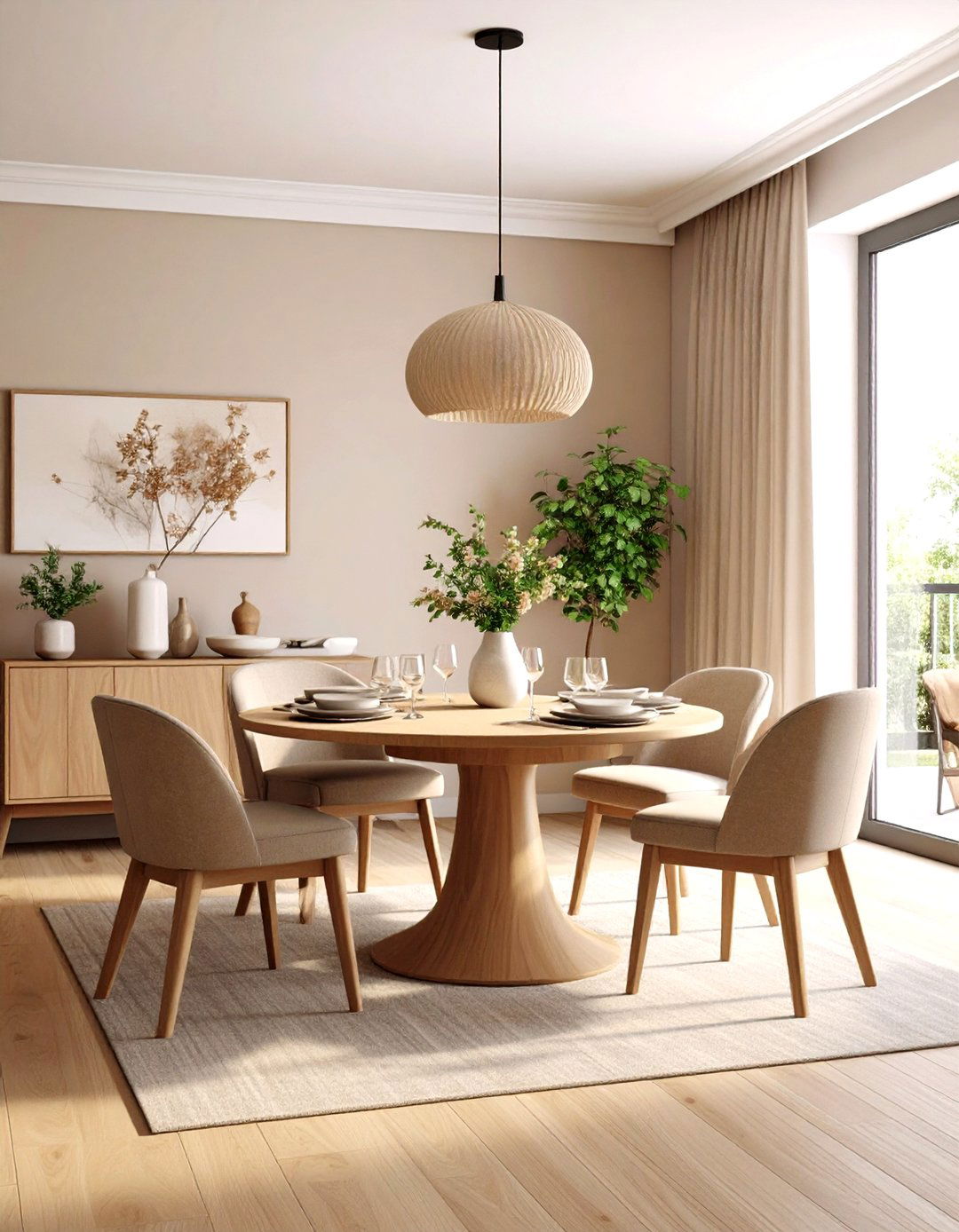
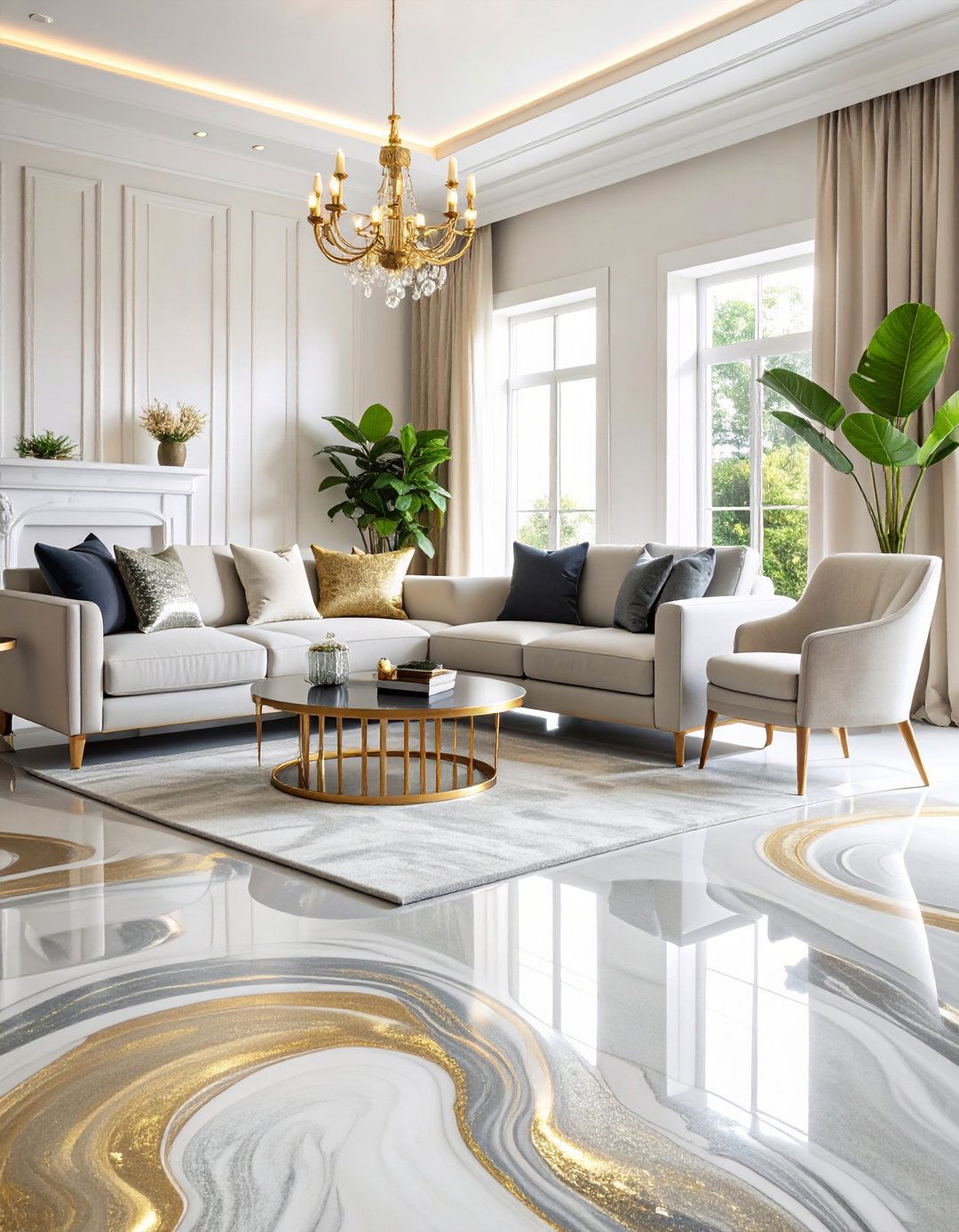
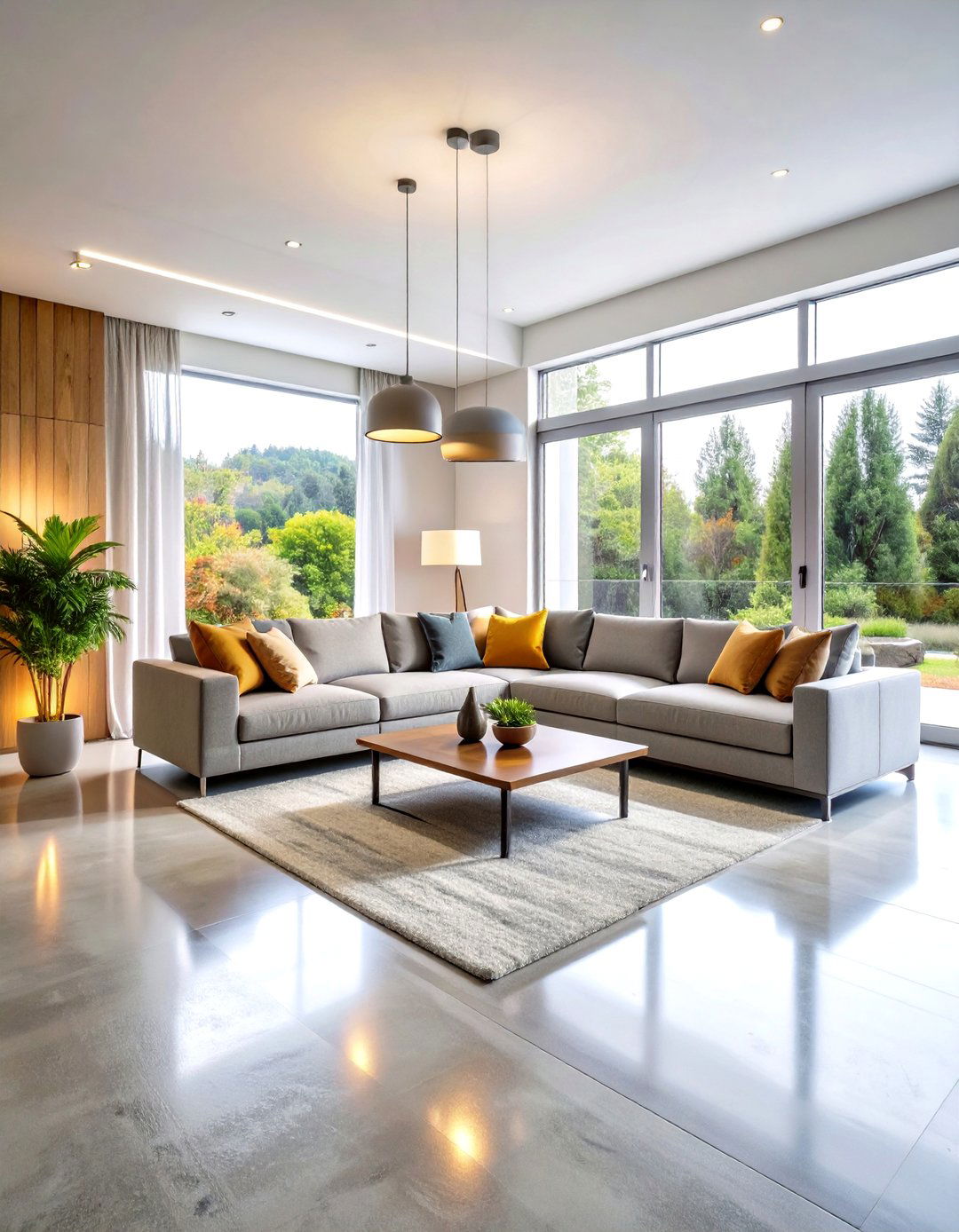
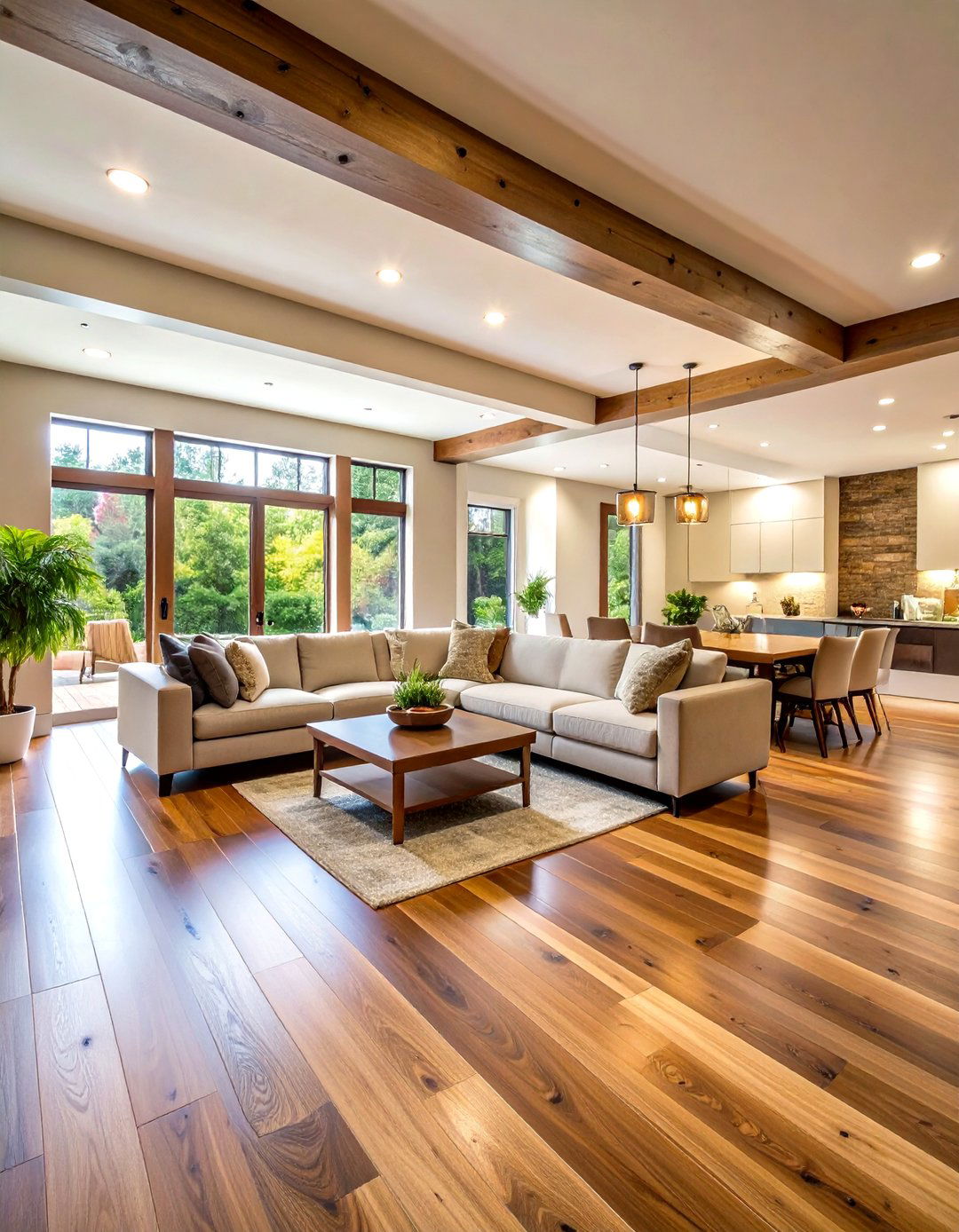
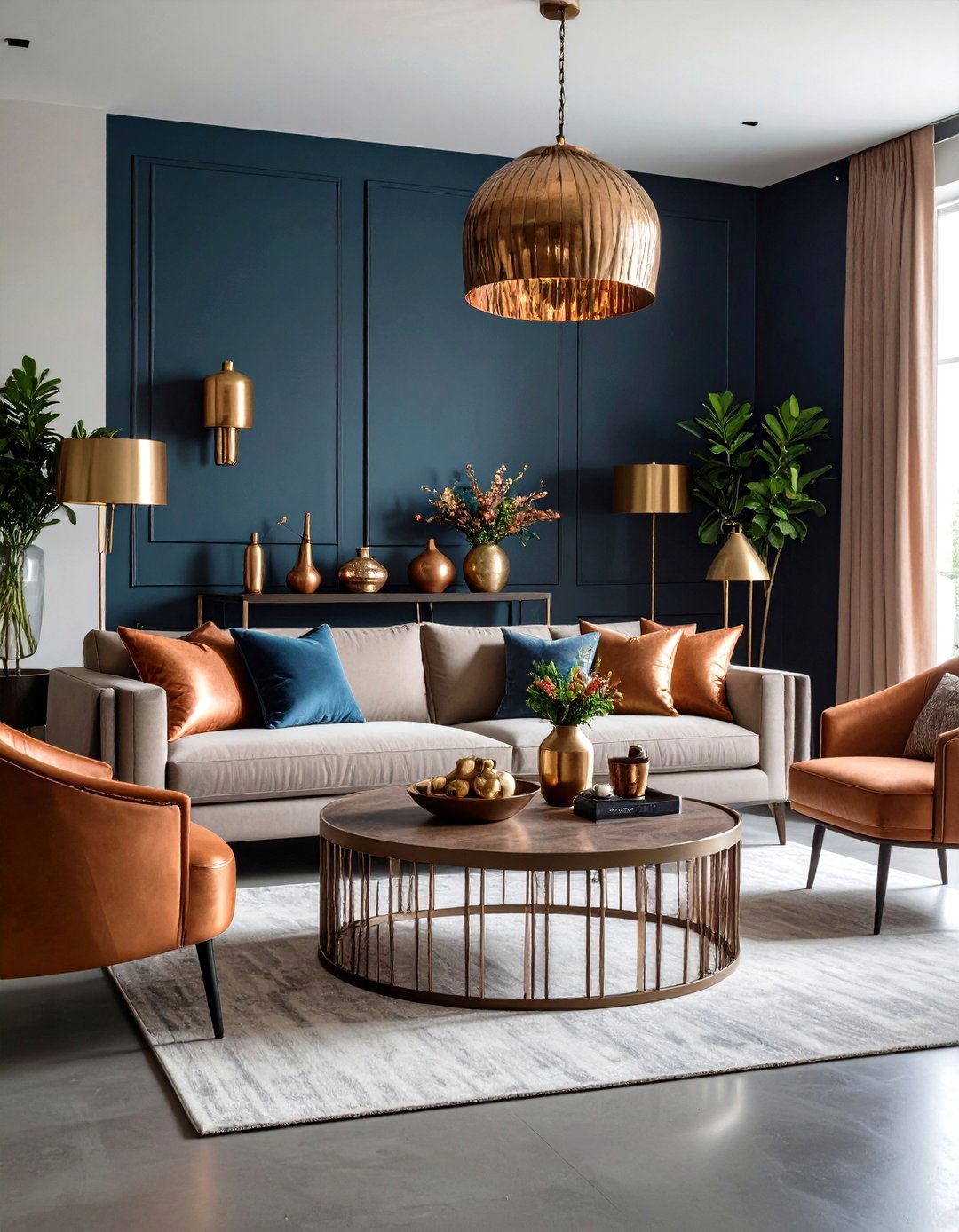
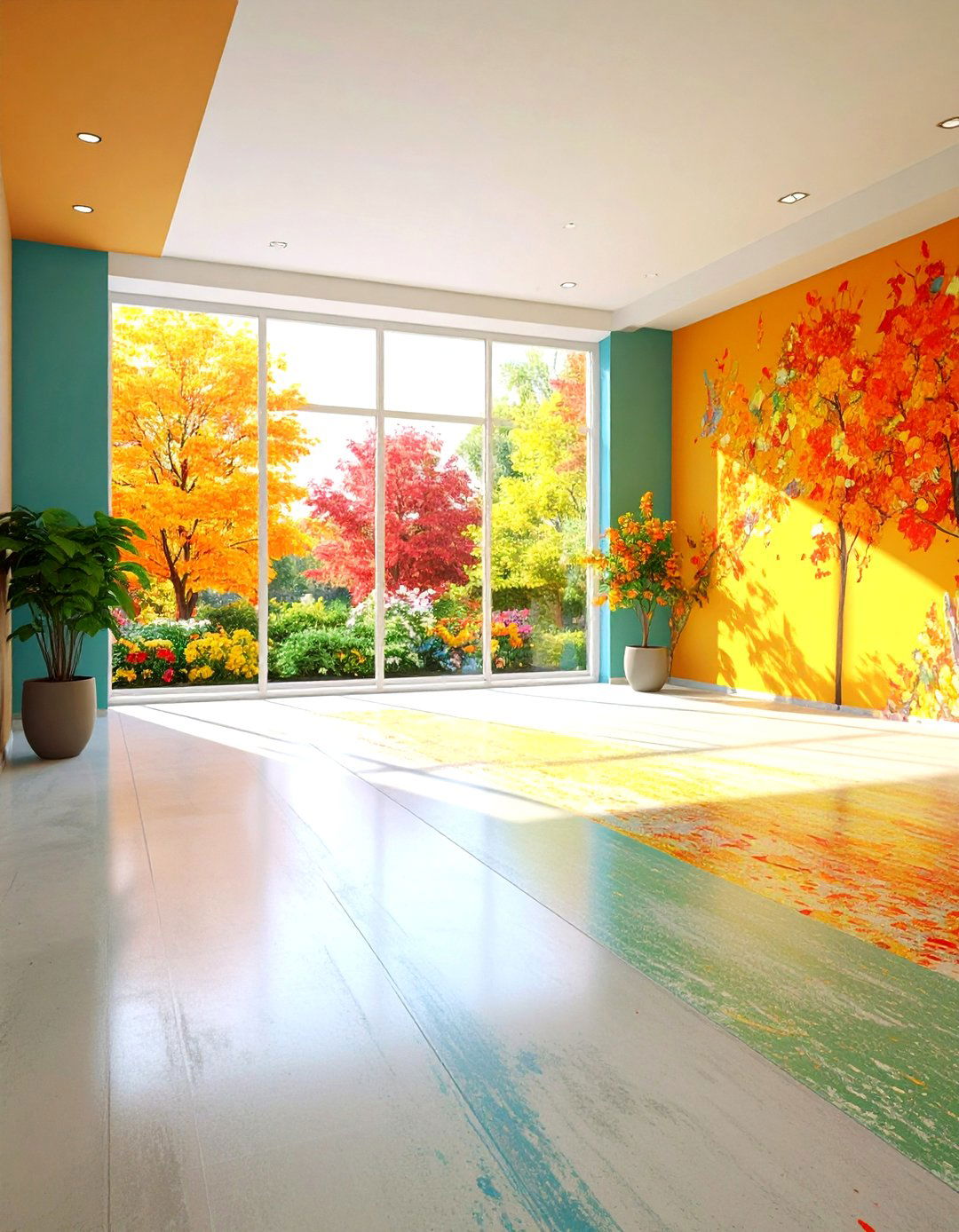
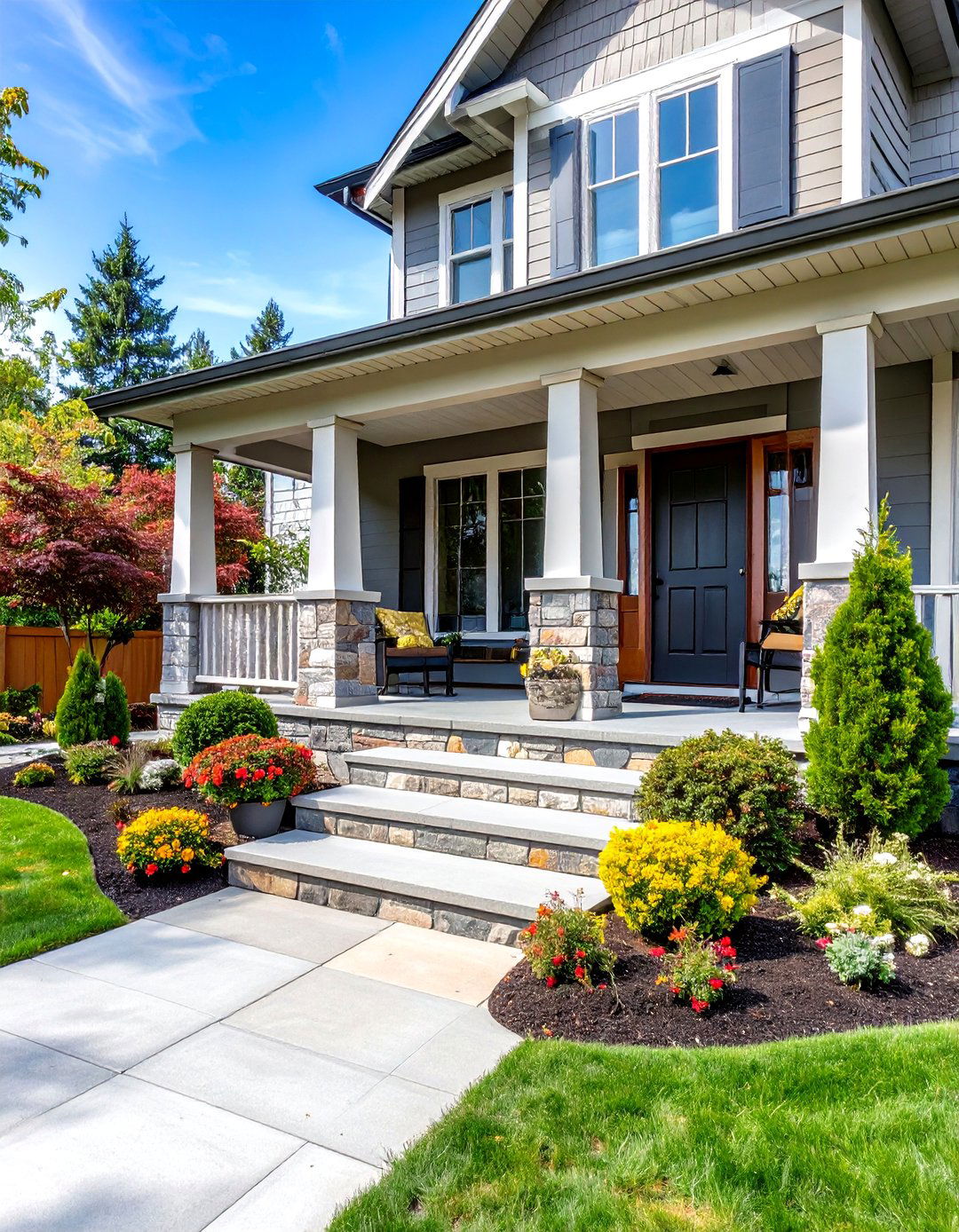
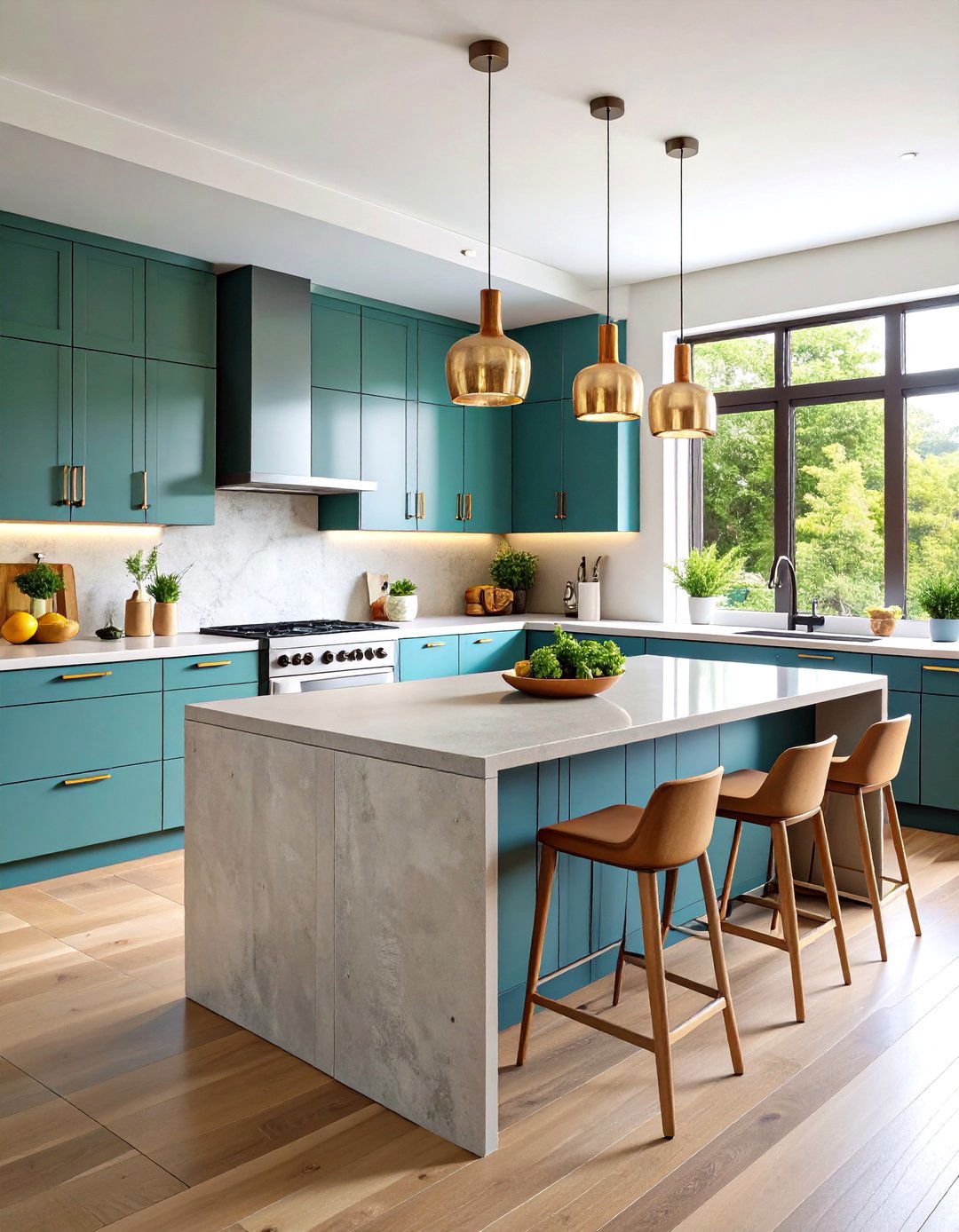

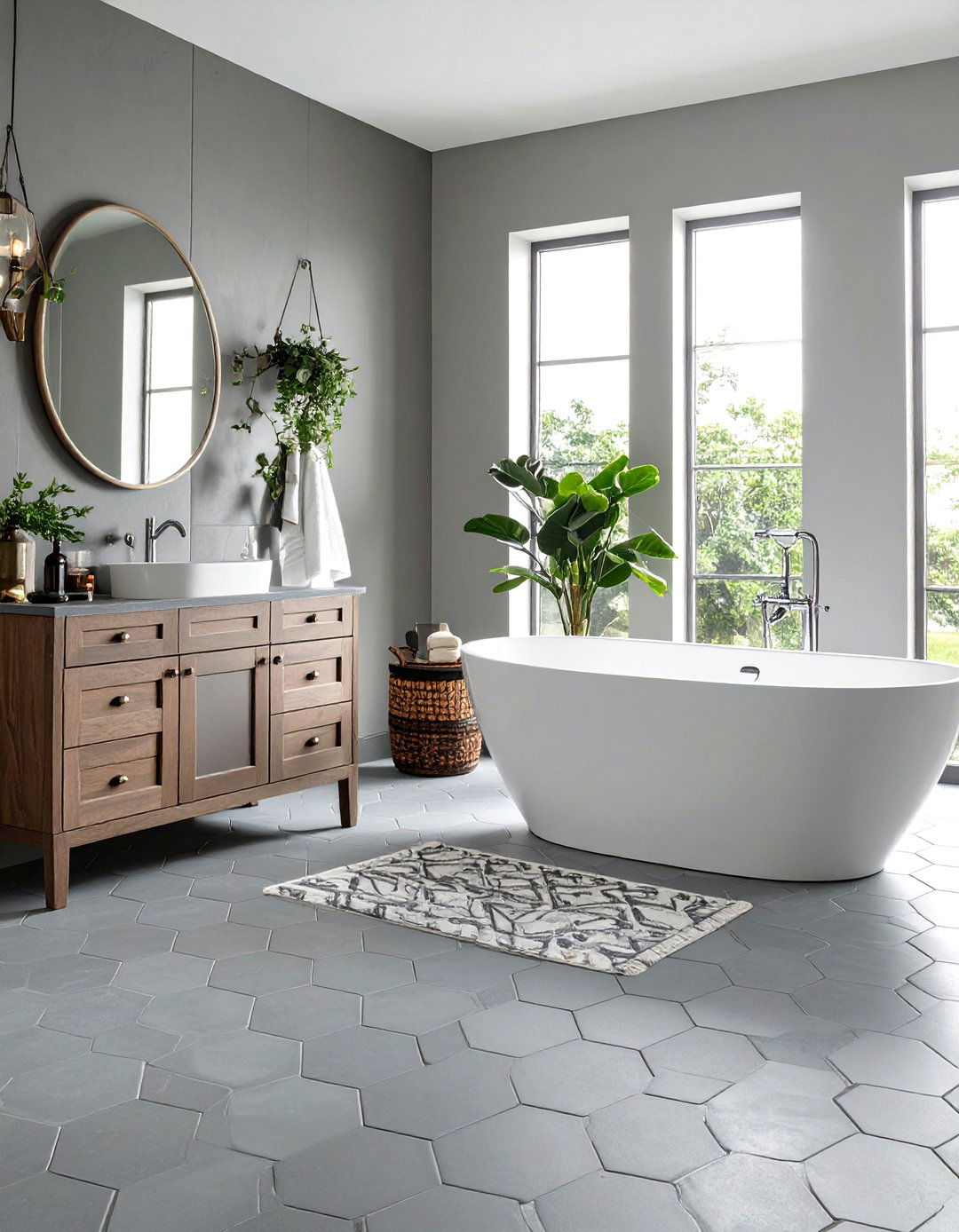


Leave a Reply